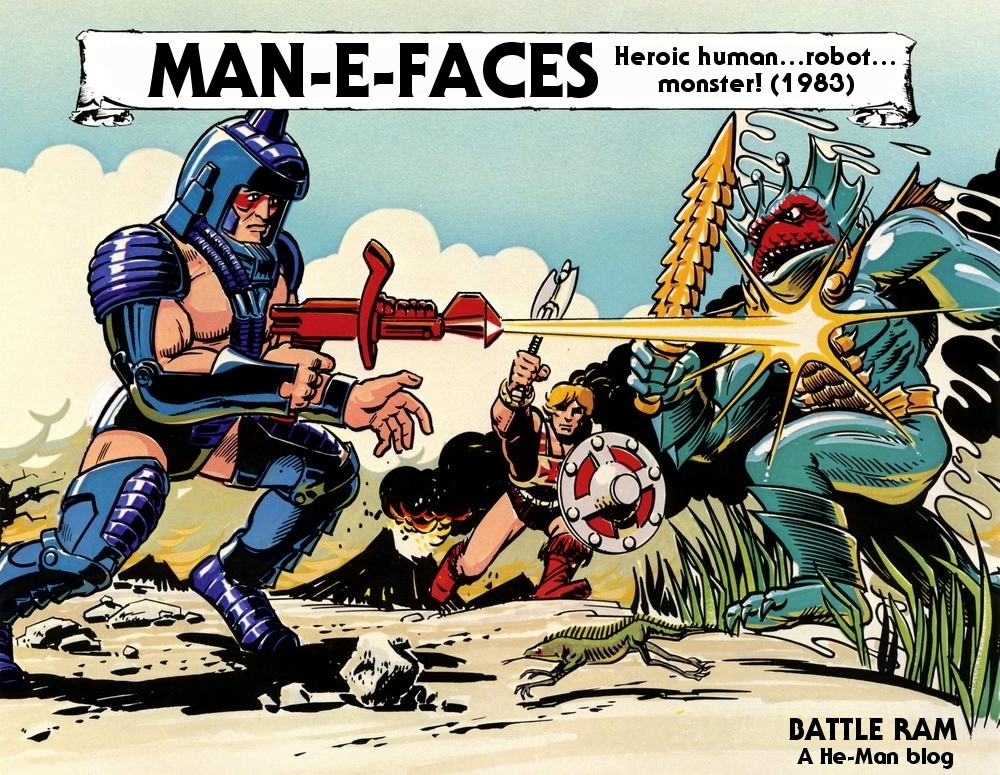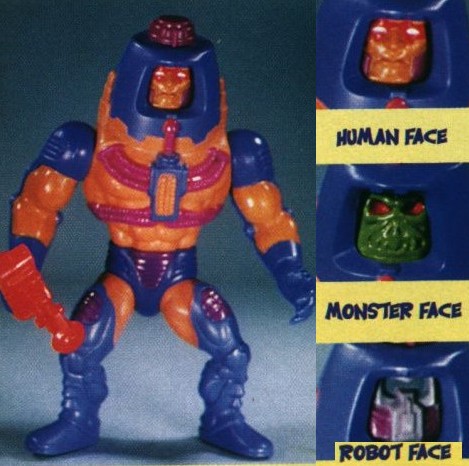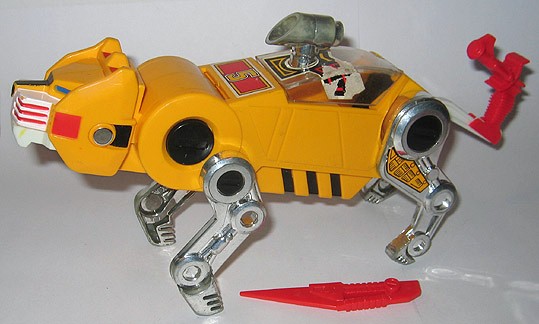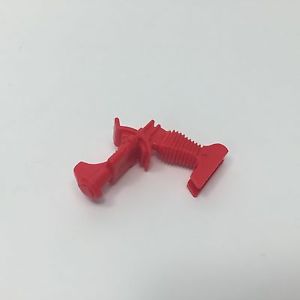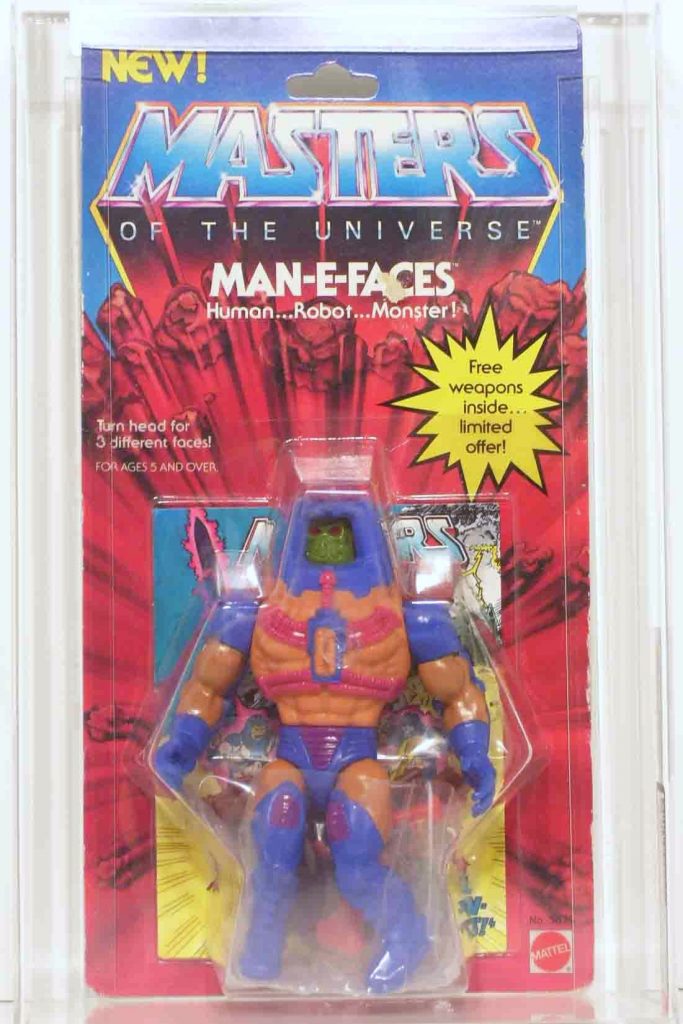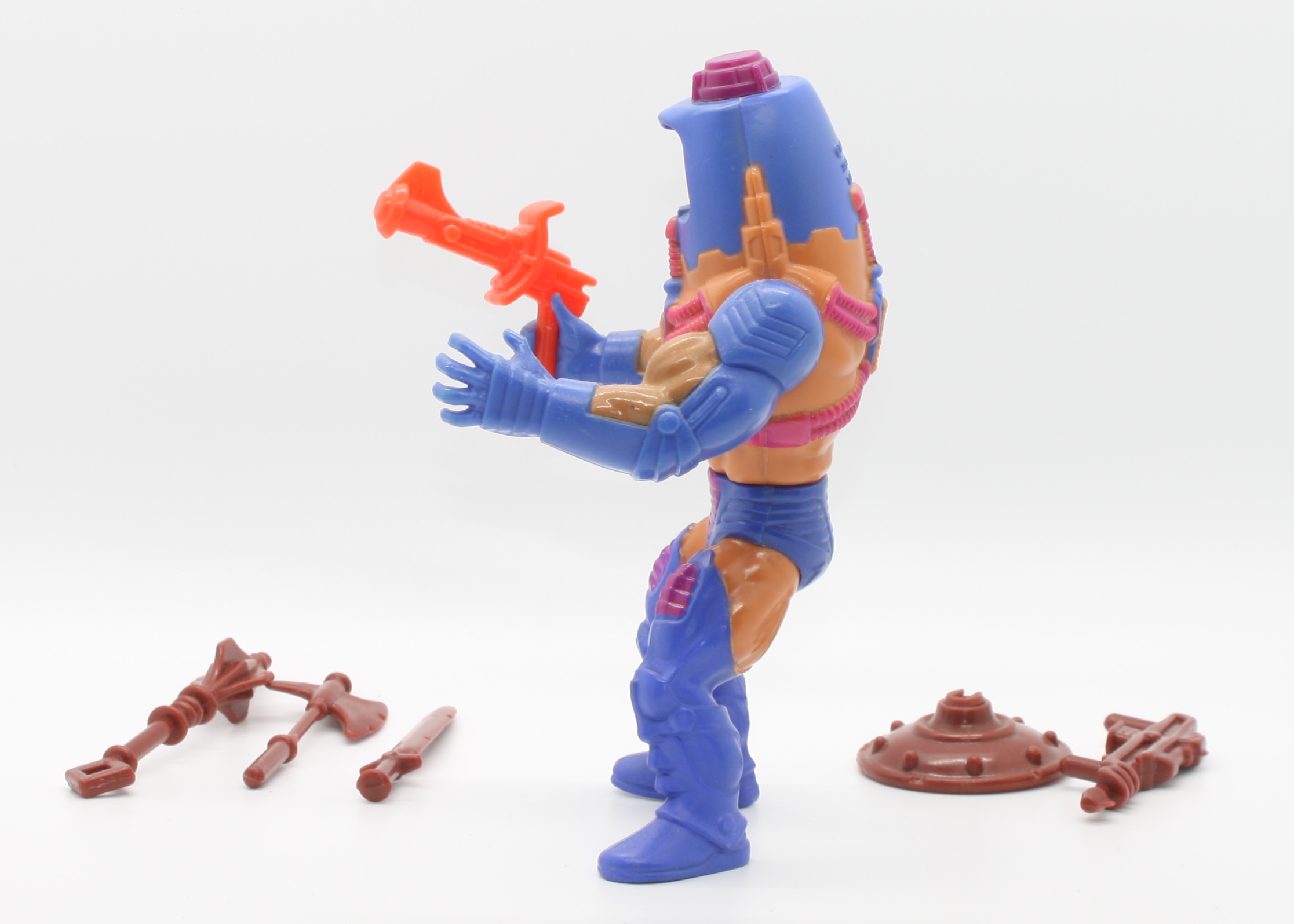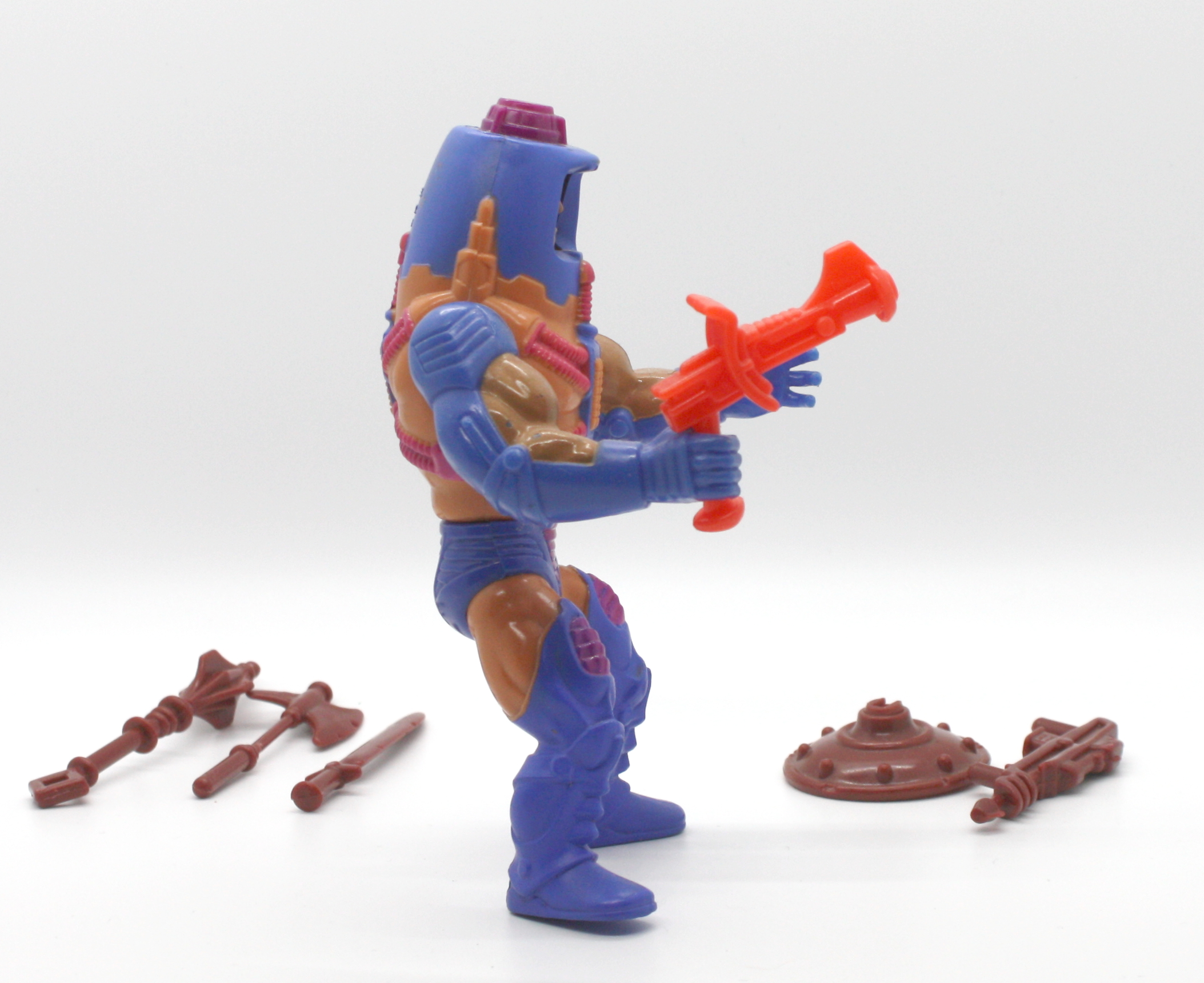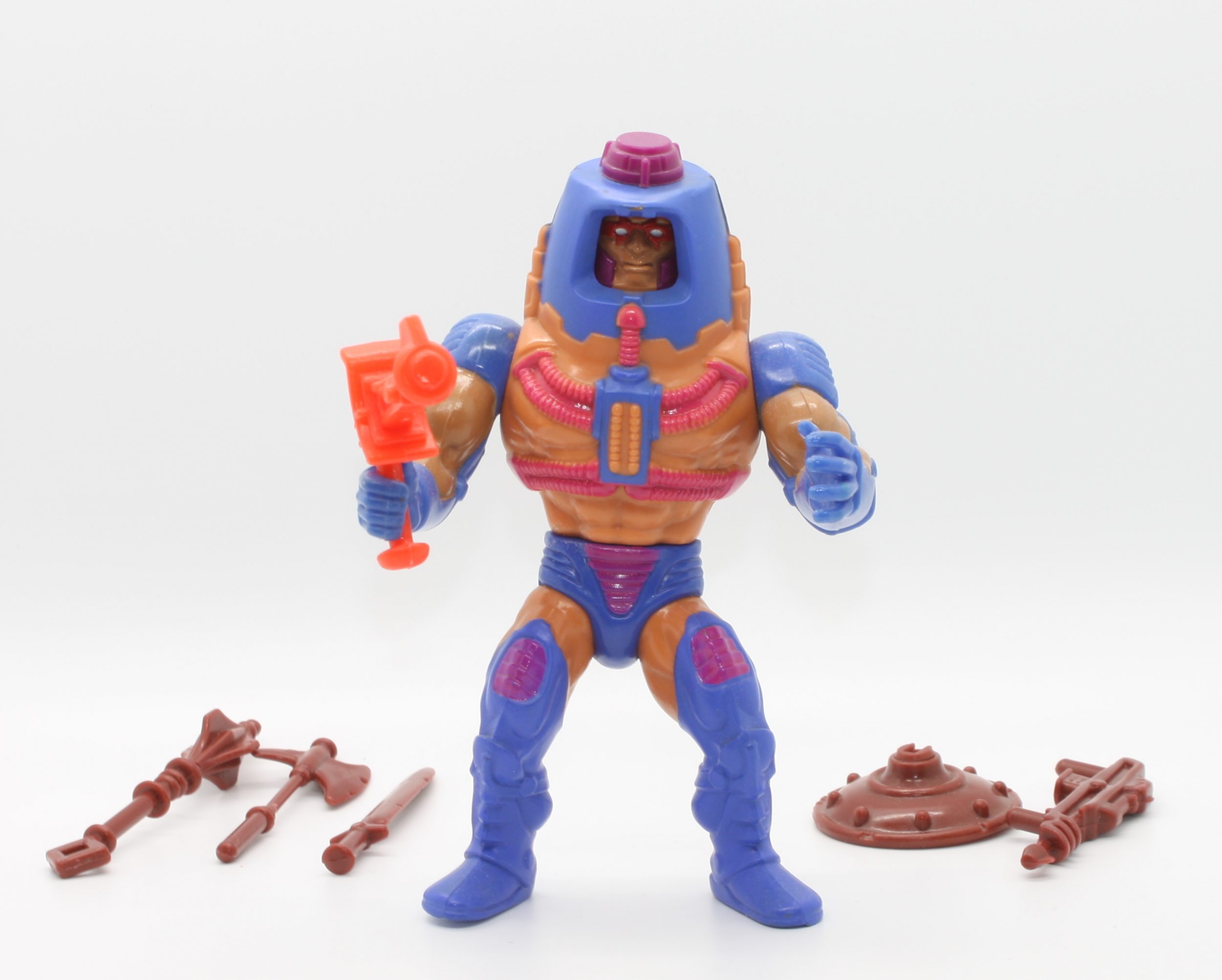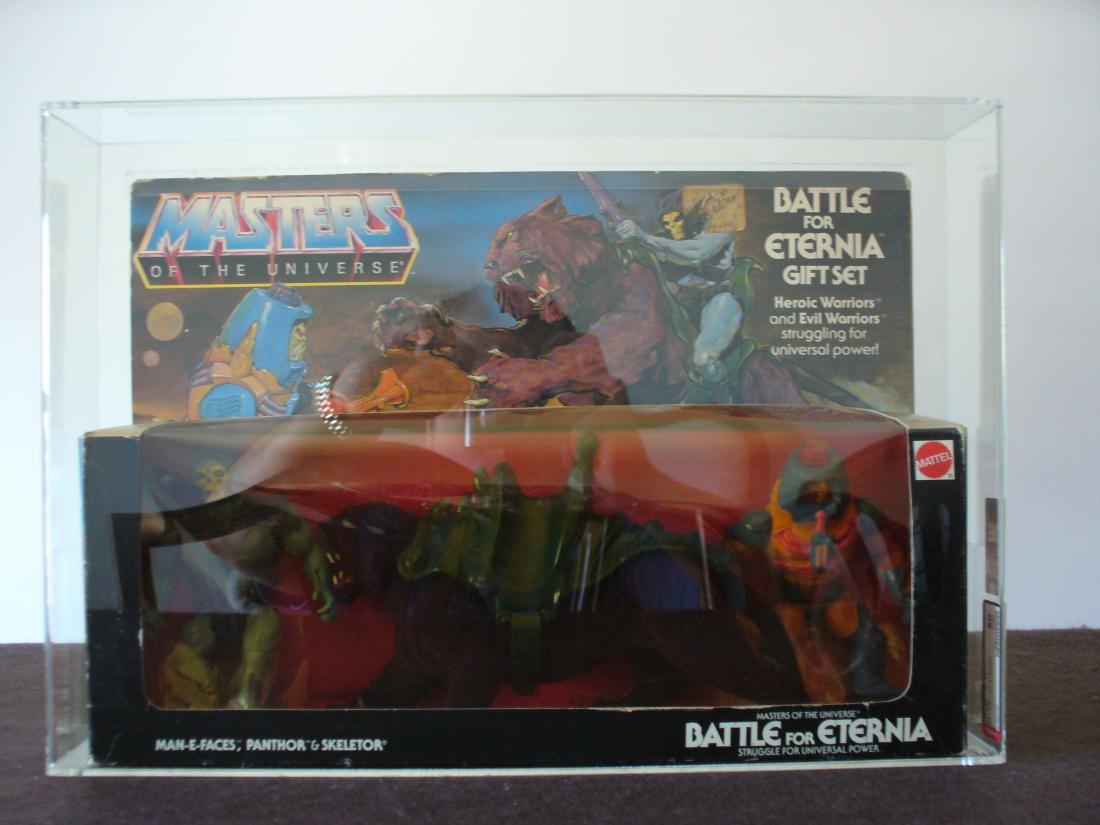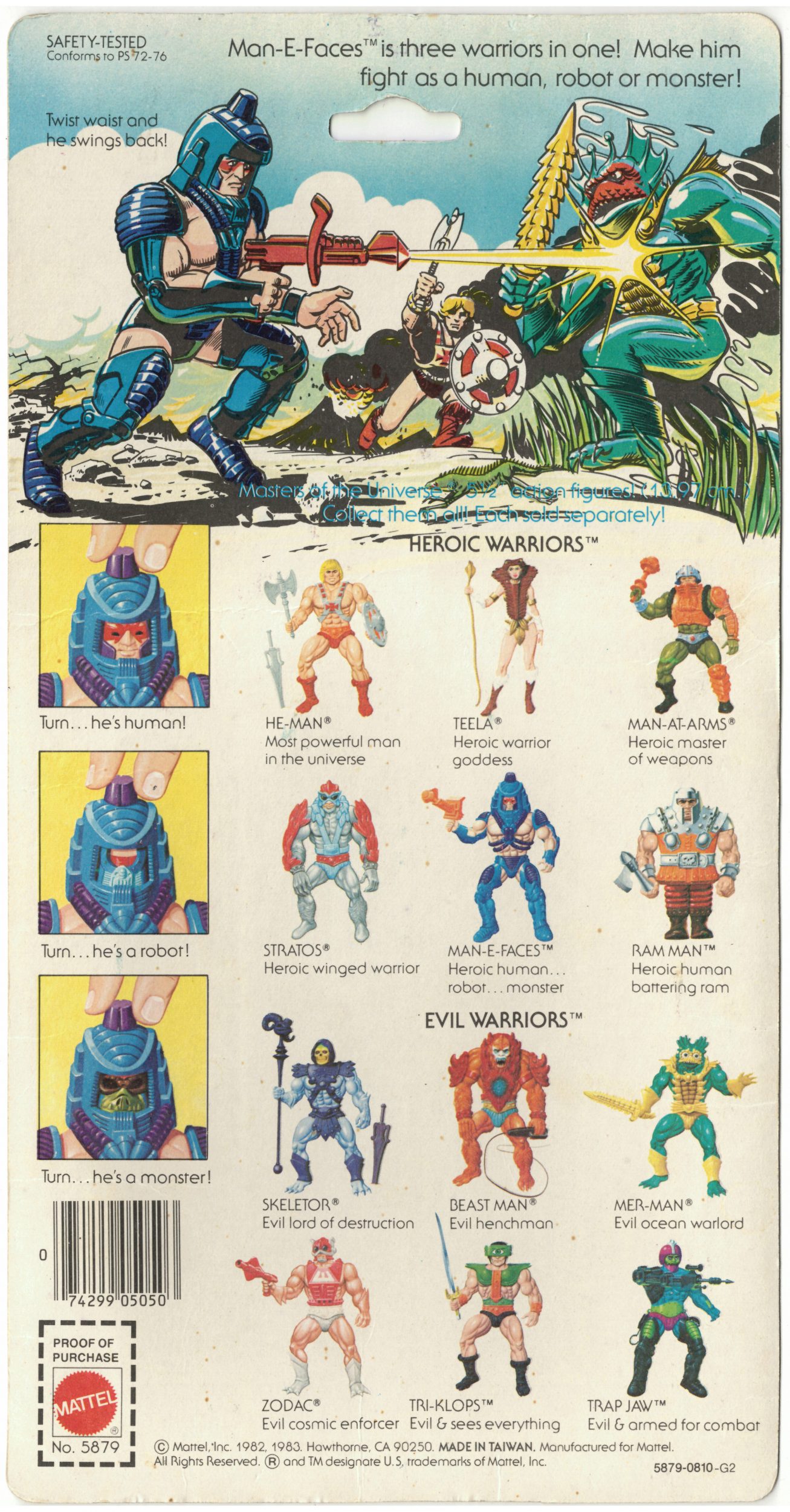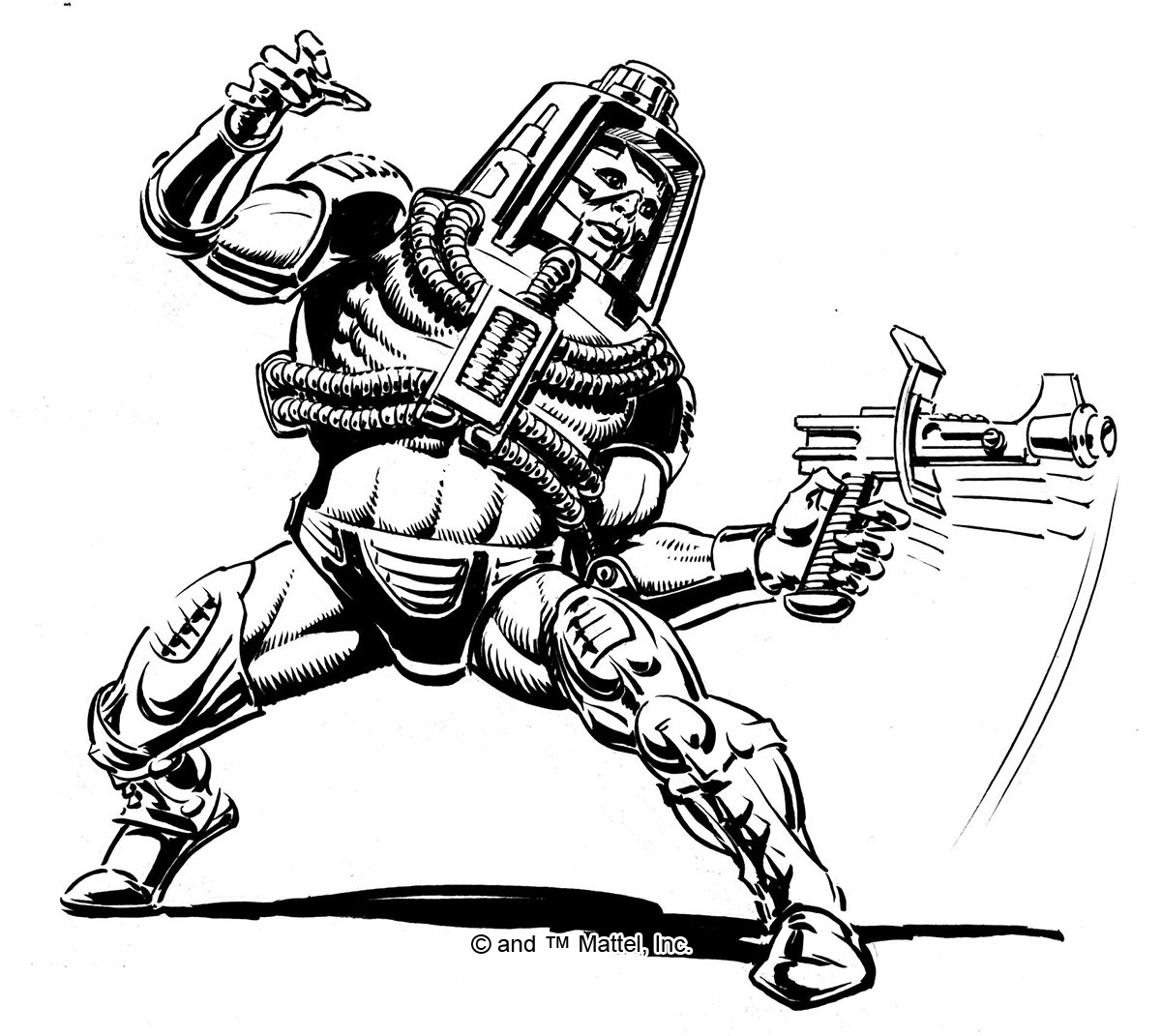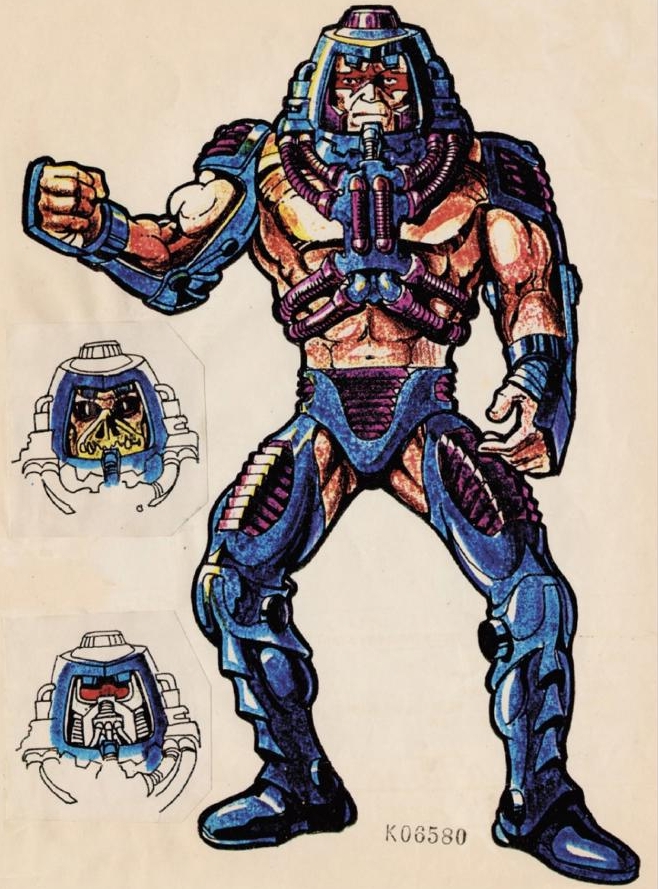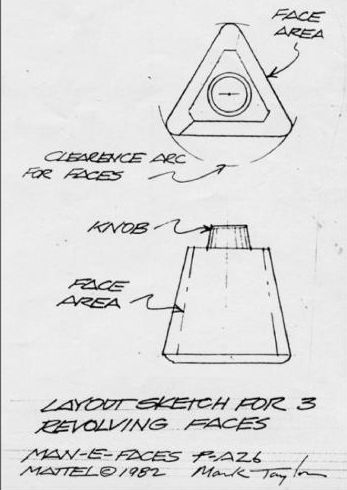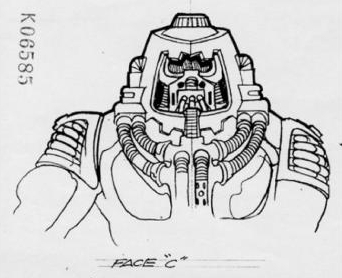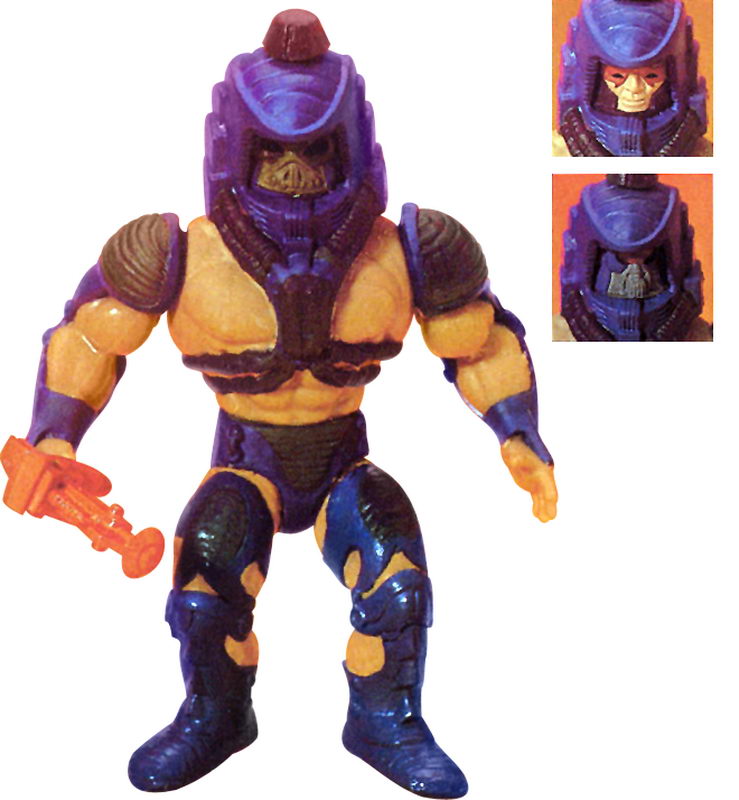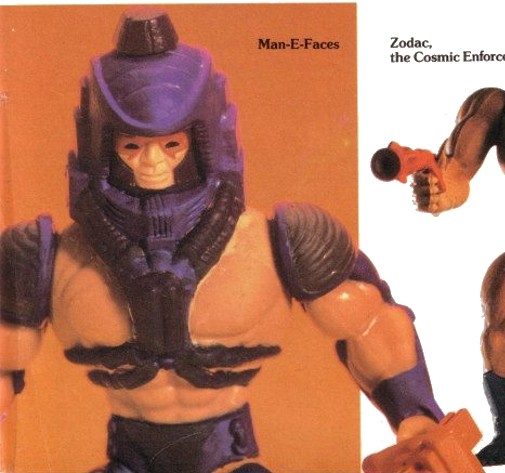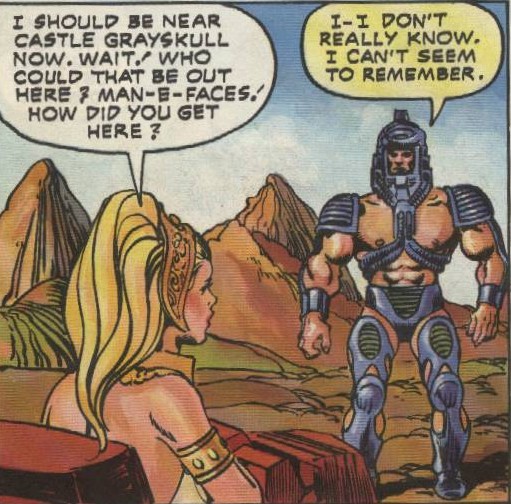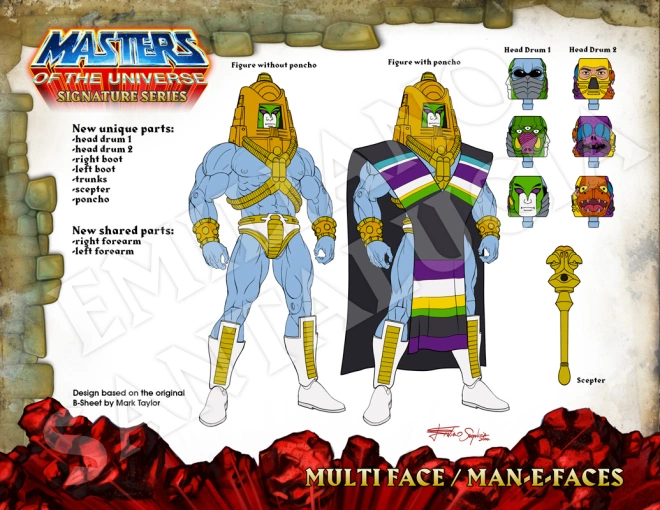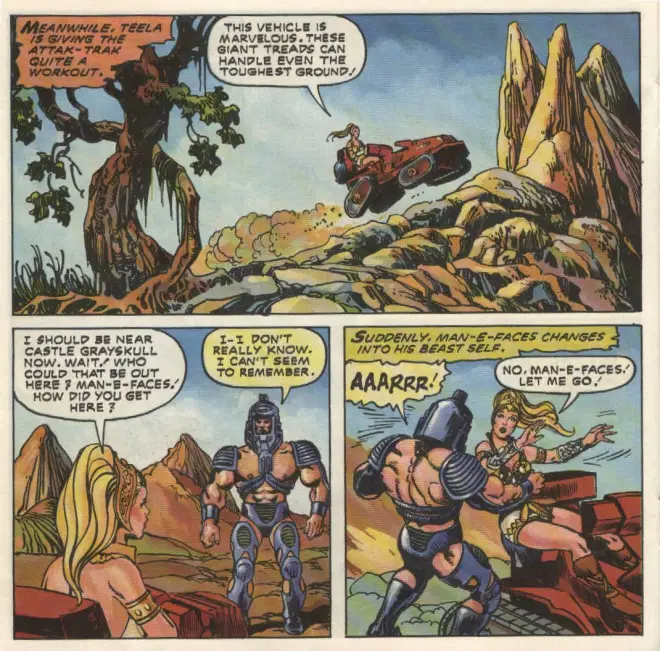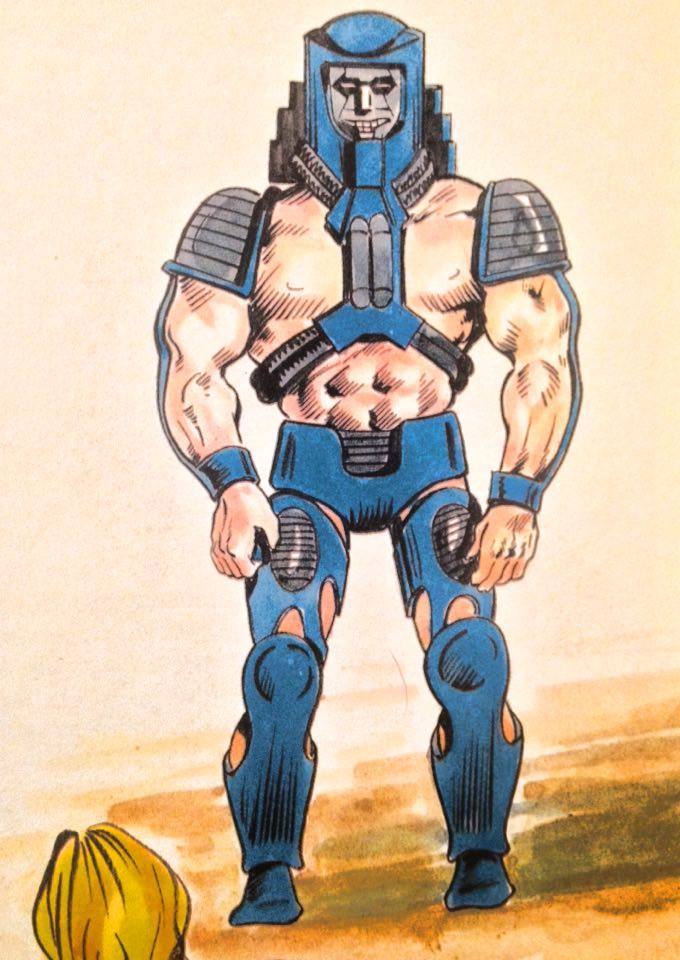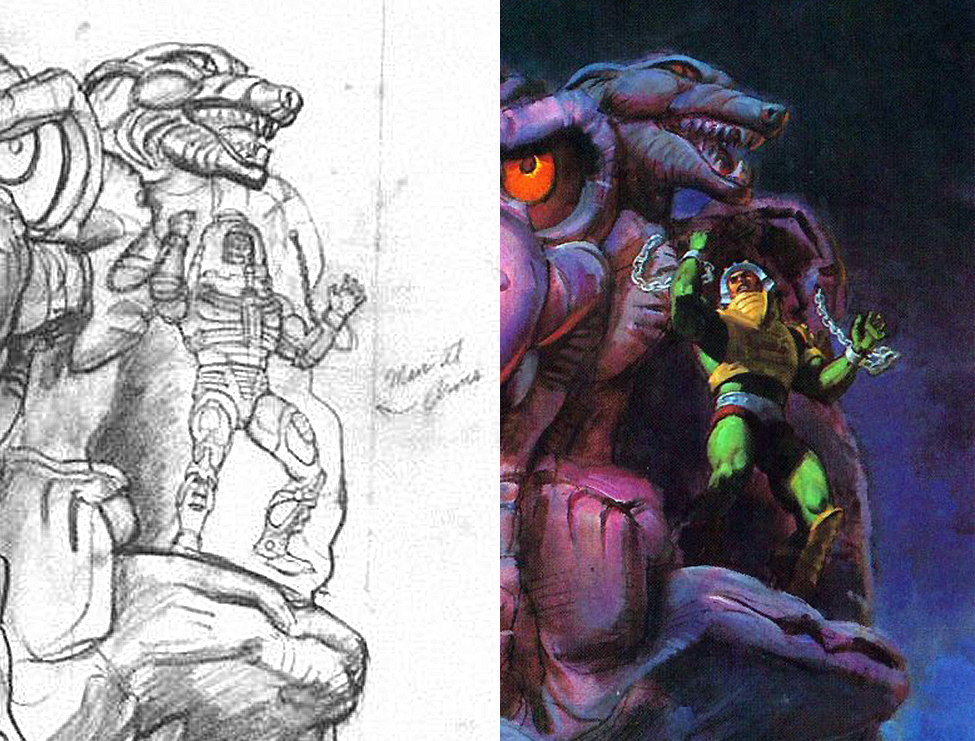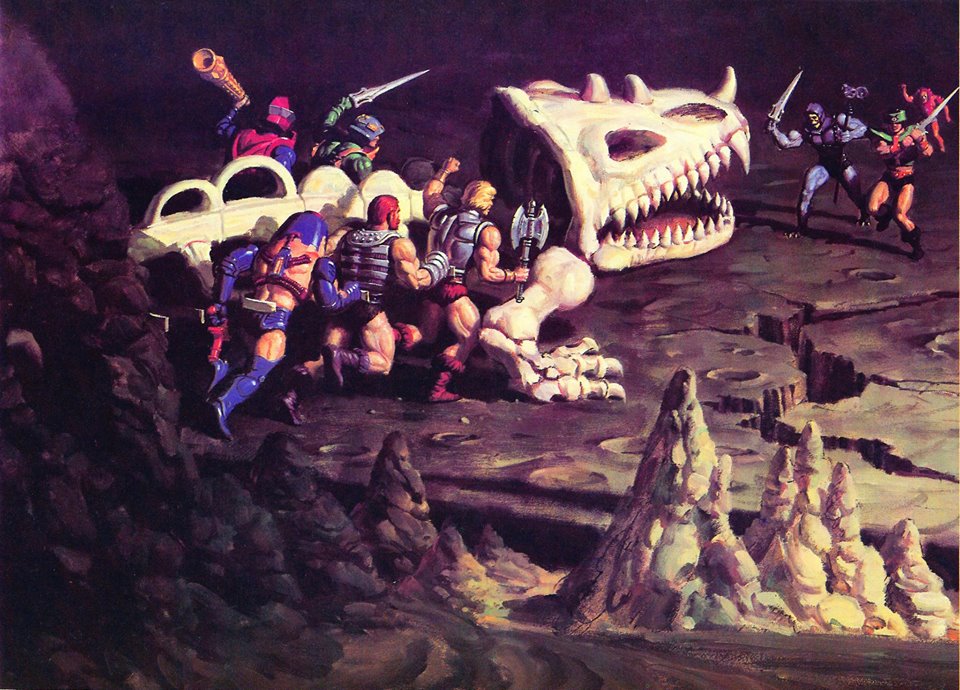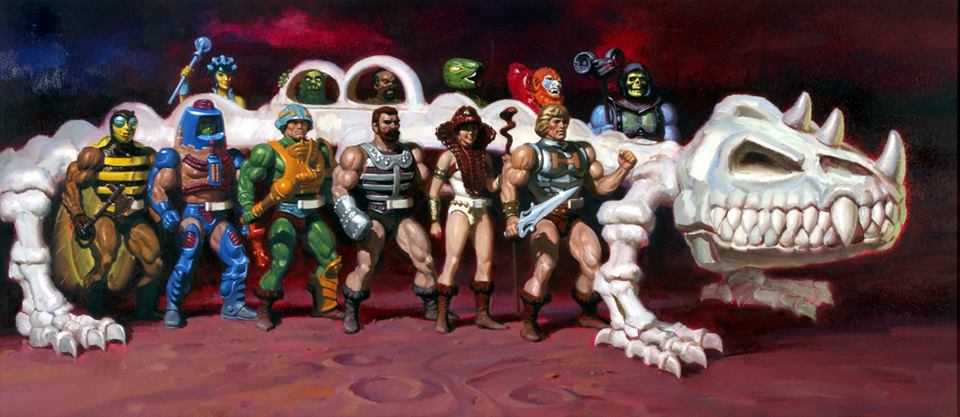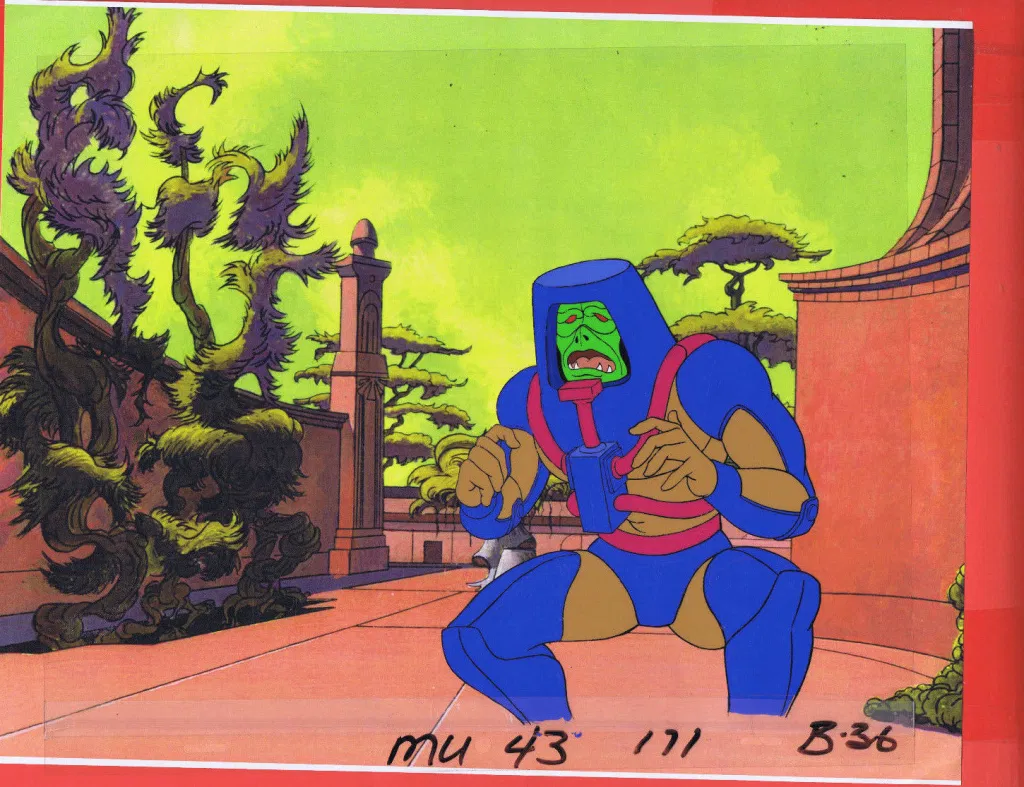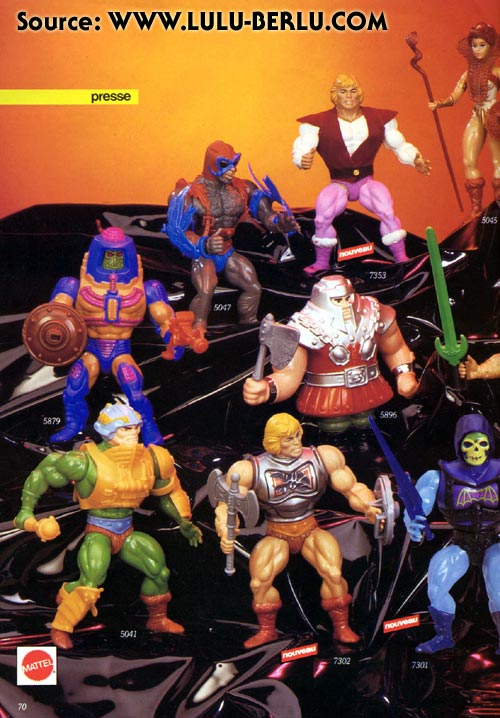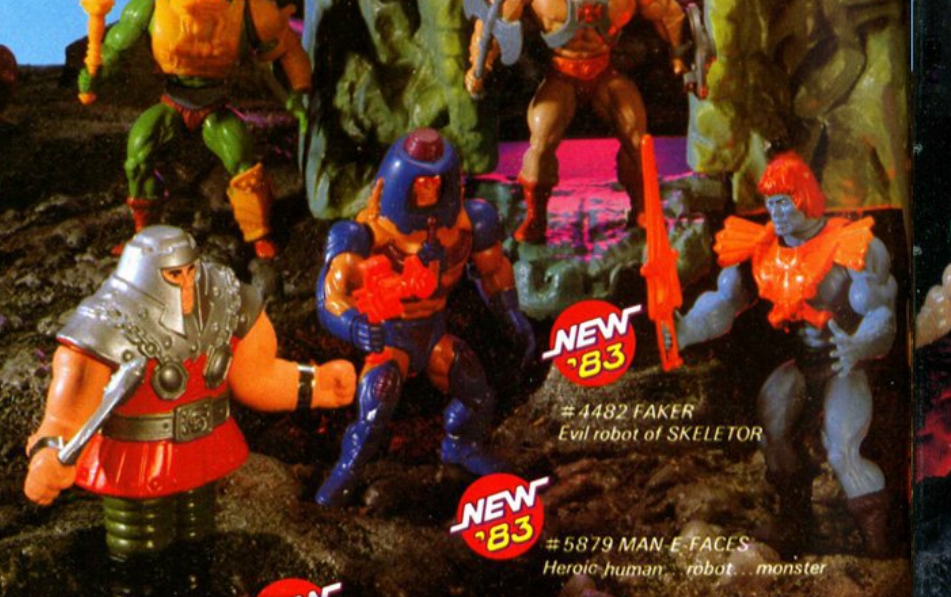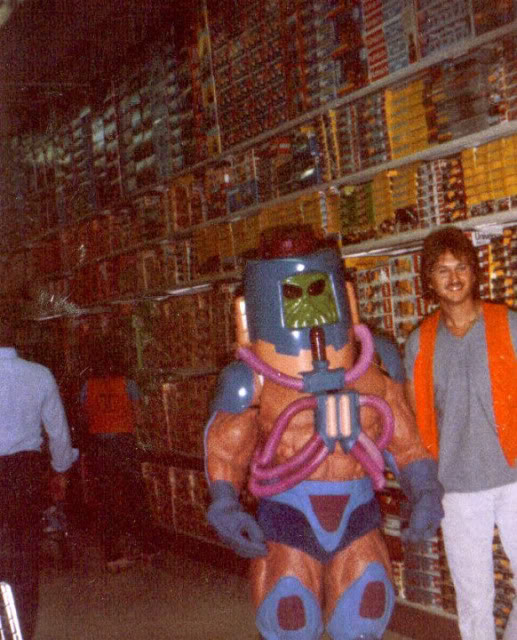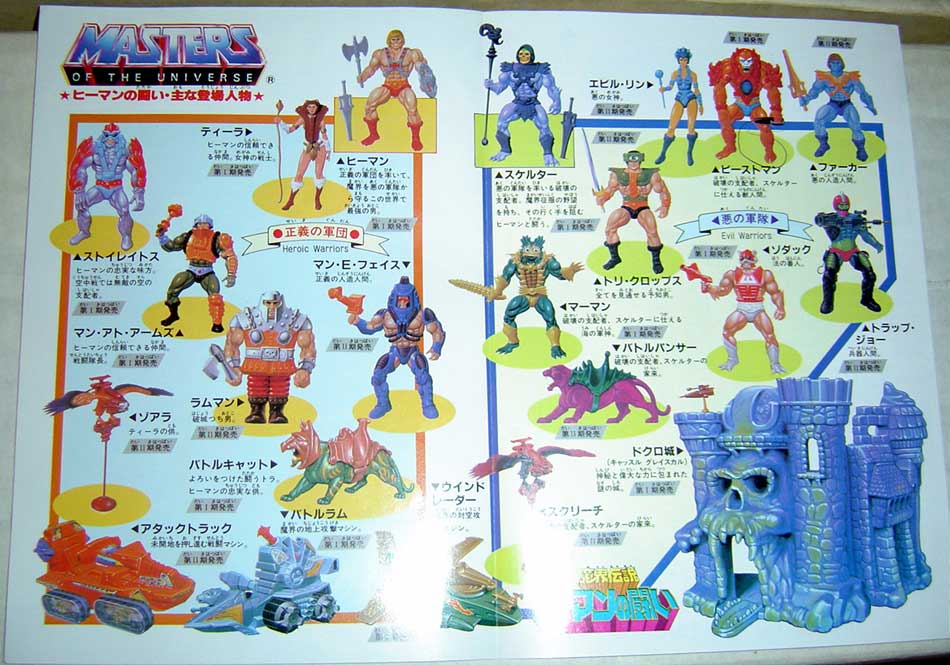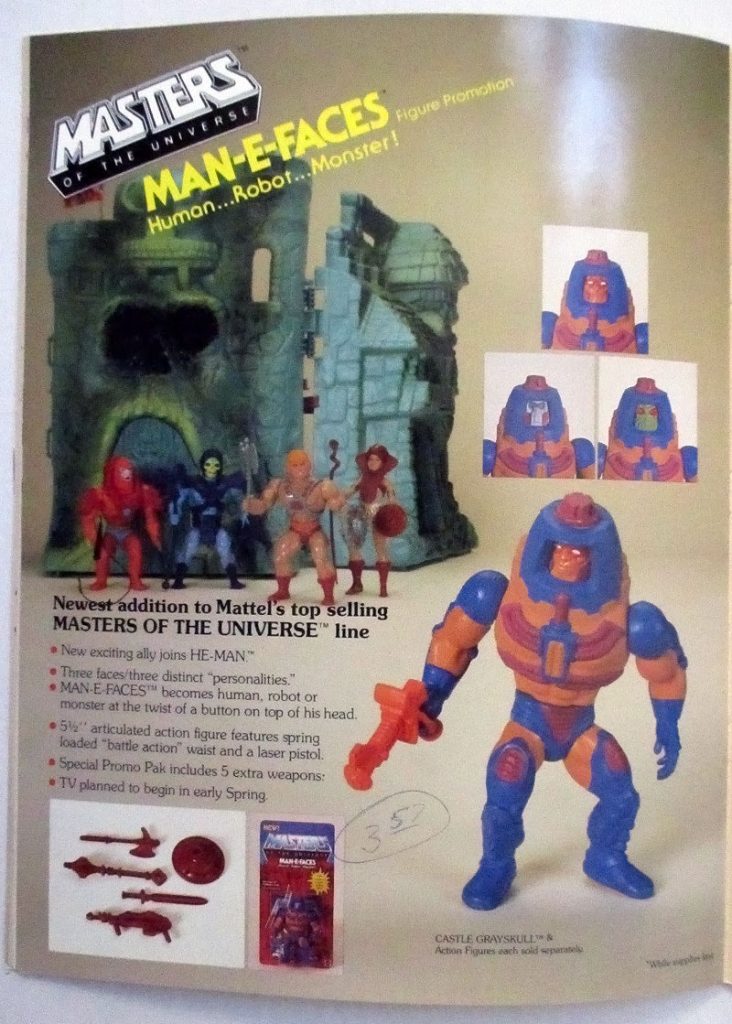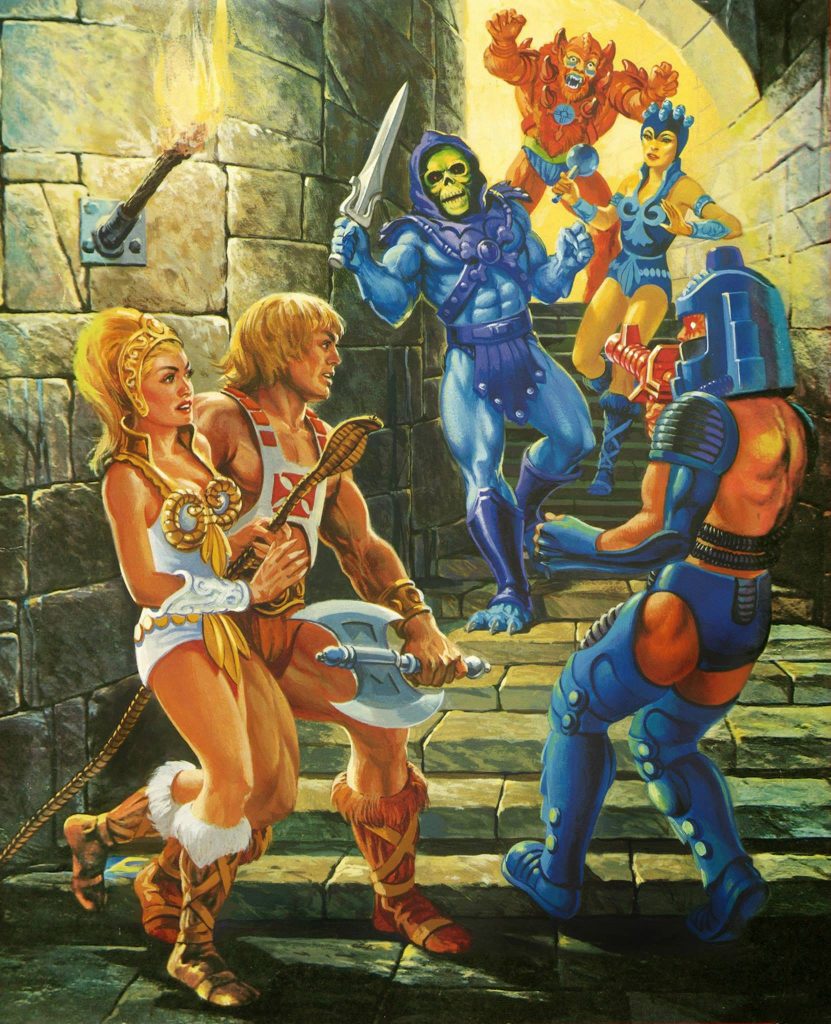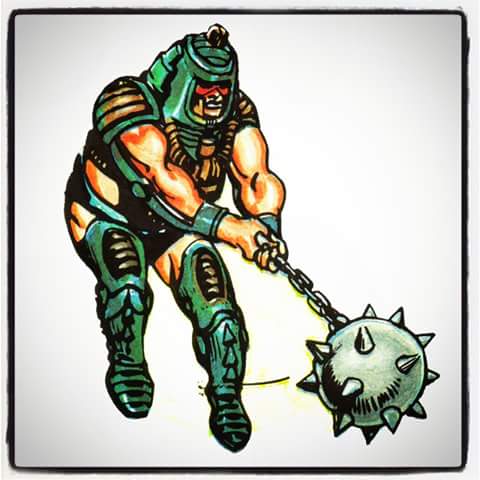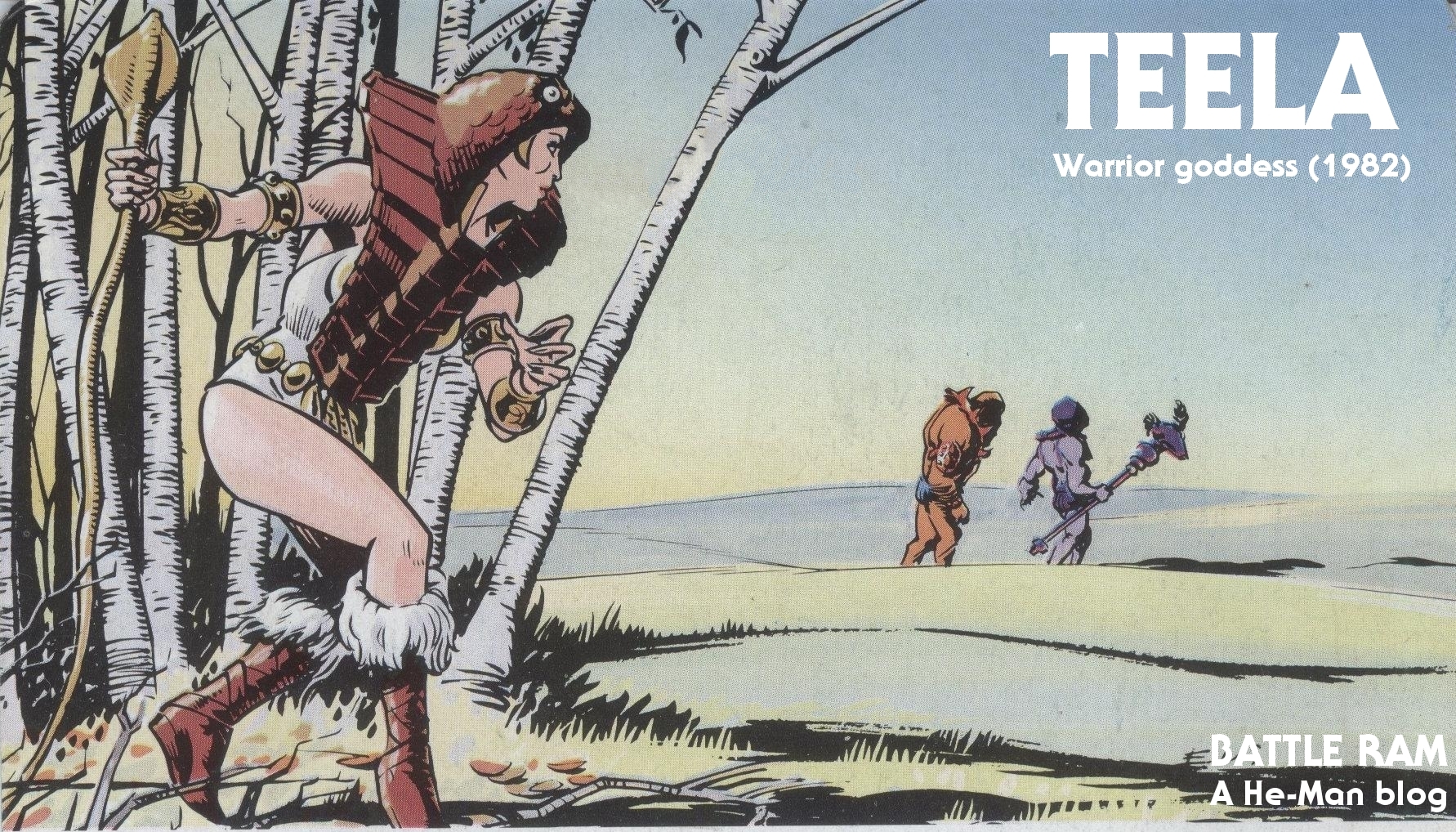
I clearly remember playing with Teela as a child. I don’t know if that means I owned her, or if she belonged to a sibling, but her gold and white costume and mysterious rust-red snake armor were etched into my brain from an early age.
Teela appears early in an animated Masters of the Universe commercial, by Filmation Studios. The full video has been uploaded by James Eatock on Instagram and Facebook.
Design & Development
Teela, released in the later half of 1982, was the first female figure in the Masters of the Universe line, and probably the best. Another Mark Taylor design, Teela was conceived as a powerful heroic warrior armed with a shield and spear:
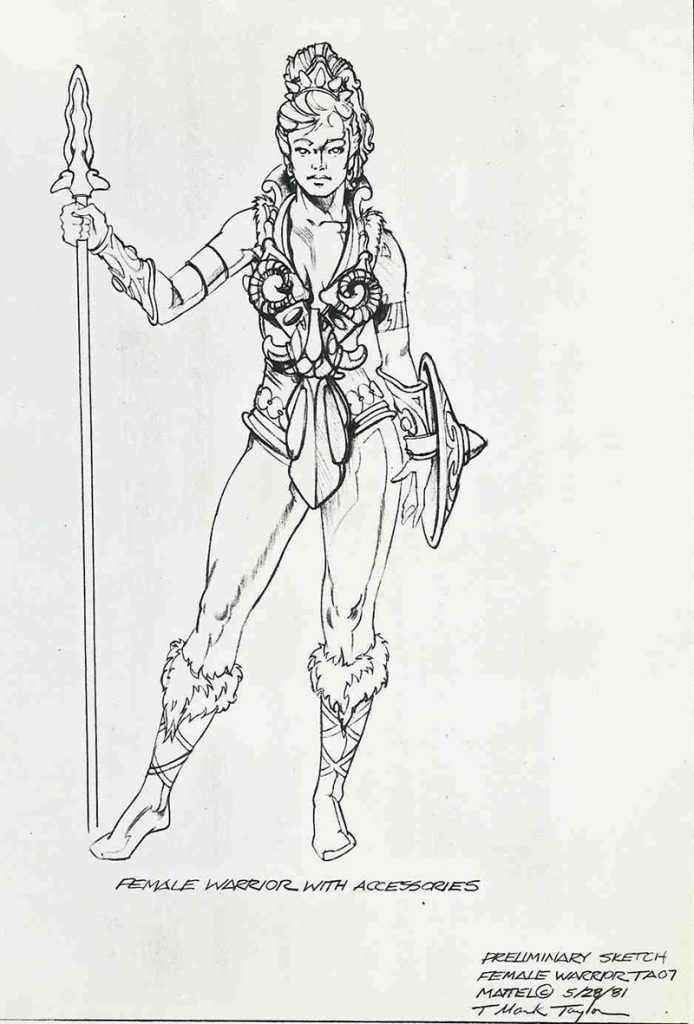
Teela originally had brown boots with white tops, a golden spear and shield, and blonde hair, as depicted in the first MOTU mini comic, He-Man and the Power Sword.

We can see these colors recreated in this recolored version of the B-sheet released in the Mark Taylor Portfolio, from Super7 and The Power and the Honor Foundation:
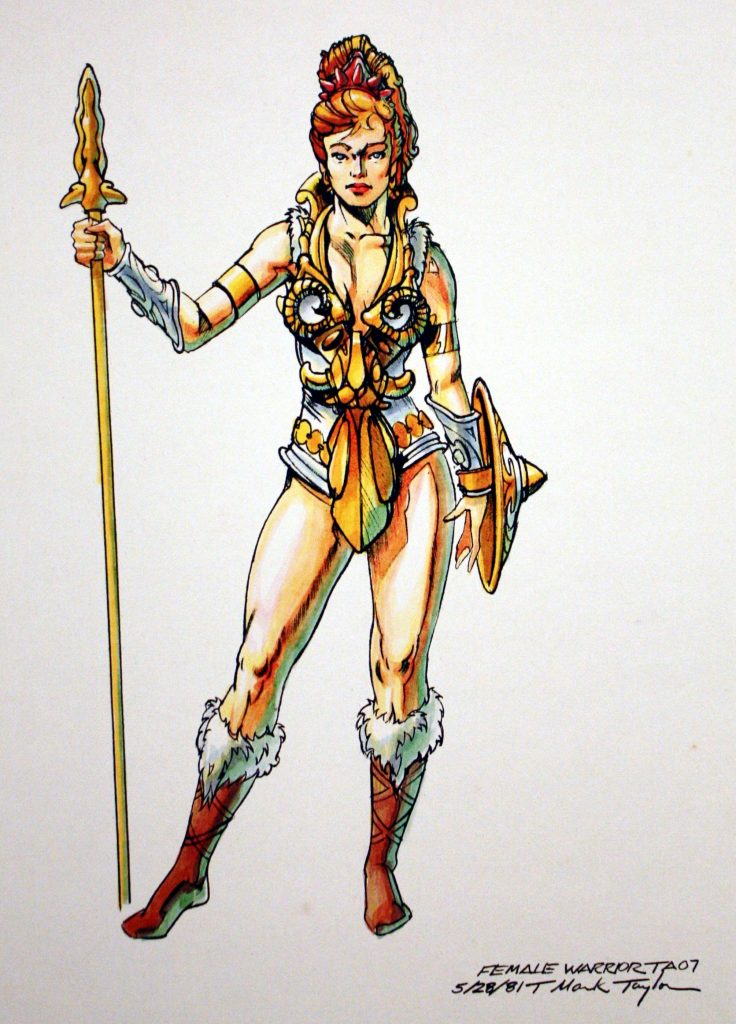
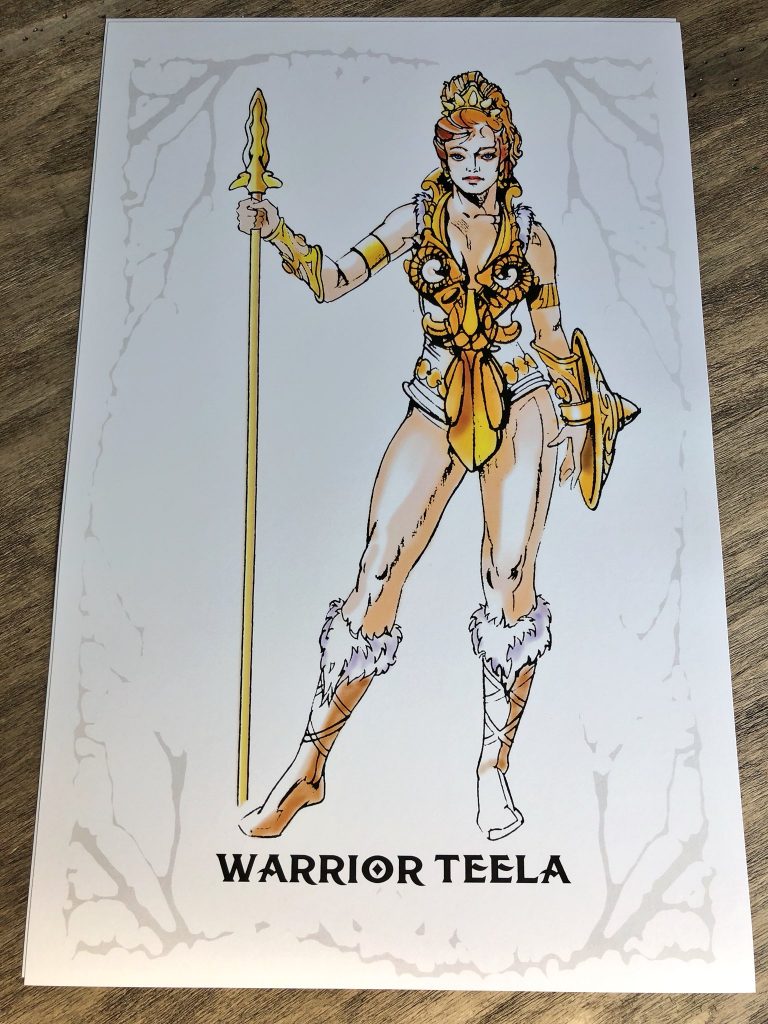
It’s probably fairly well known among fans now that two separate Mark Taylor characters, Teela and Sorceress (aka Goddess), were eventually combined into a single character. Mattel’s marketing group didn’t think there was enough demand for two female action figures in one year, although it would be later shown that almost 40% of the kids who collected MOTU figures were girls. Zodac ended up being created to take the eighth spot in the 1982 lineup.
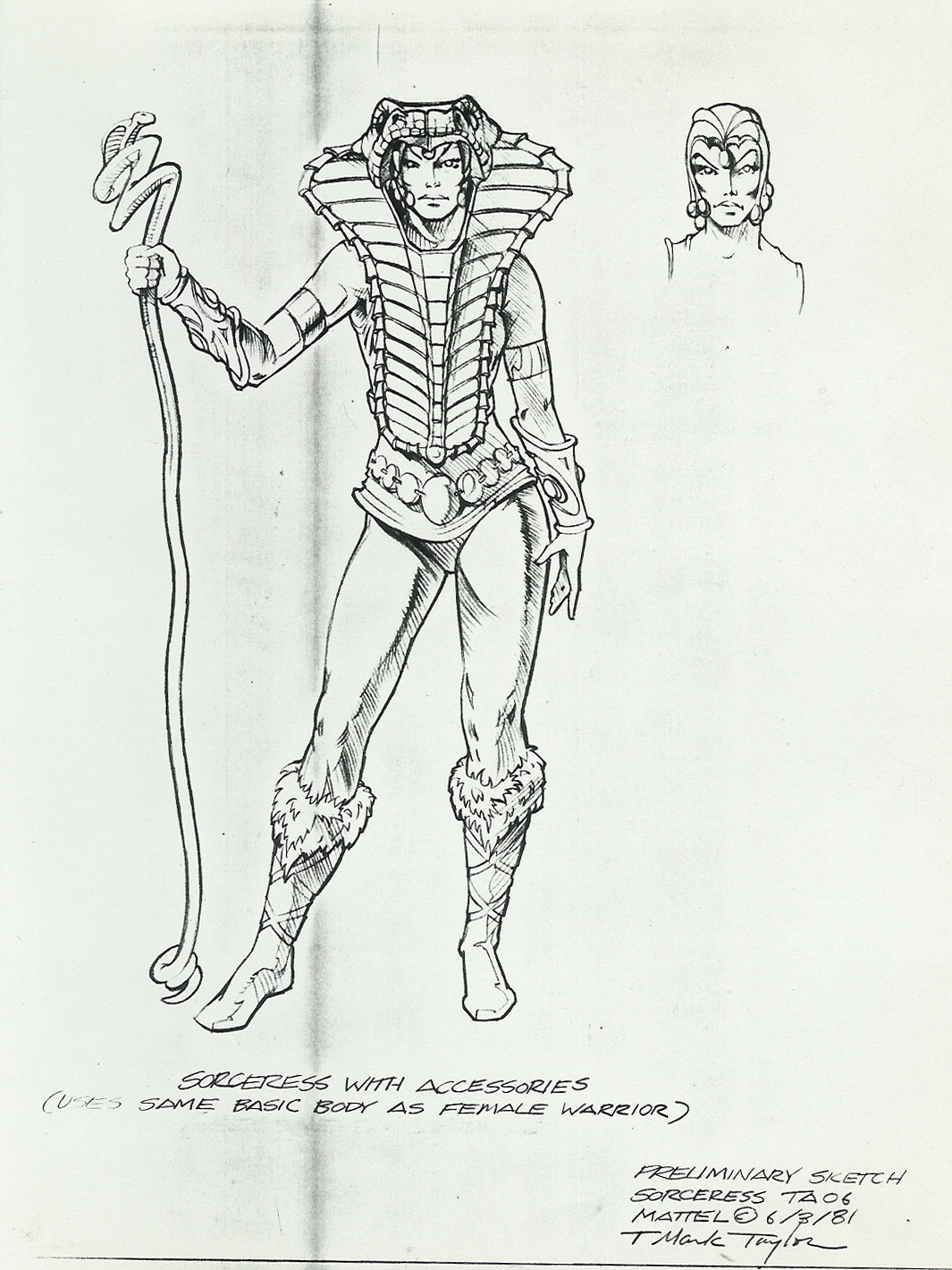
Sorceress, or Goddess as she is usually called now, was intended to be a changeling and double agent. Her snake head dress had fangs and she had a cold, calculating expression in the concept art. She had brown boots, brown armor and a brown staff, a light green body suit, and a dark green outfit. Her outfit was very similar to Teela’s, but lacked the leaf-like overlay hanging down her front.

Although Sorceress/Goddess wasn’t produced as a figure in the vintage line, she did make an appearance in the first MOTU mini comic. By that time she had been re-imagined as a noble and mysterious defender of Castle Grayskull.
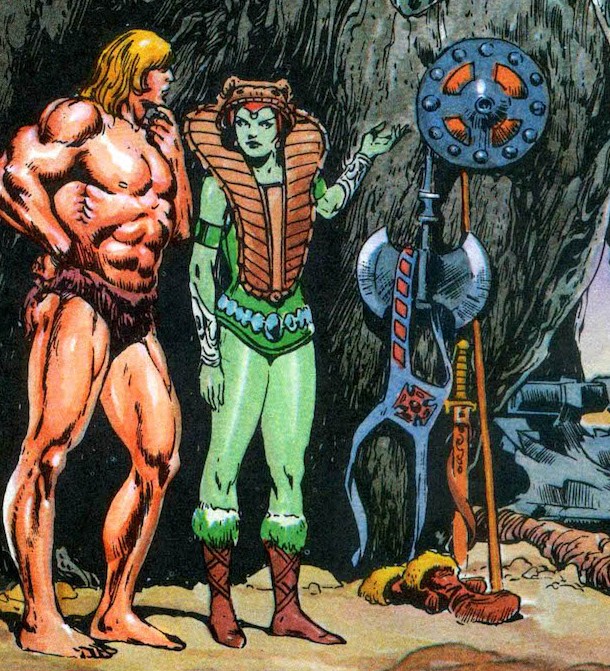
It’s worth noting that although Mark Taylor envisioned her as a human woman wearing a green body suit, the comic book (art by Alfredo Alcala) portrayed her with a green face as well. When Teela and Sorceress/Goddess were combined into the same character, Teela inherited the Sorceress’ snake armor and staff, but kept her own human appearance.
It’s also worth noting that Mark Taylor’s original design for the the basic Teela buck lacked the golden collar overlay that was molded into the final figure. That piece was intended to be an additional accessory. Sorceress/Goddess would have had a unique head, and the snake armor would have gone over the basic body design below:

The first known prototype of Teela exists only in fragmentary form. Sculpted by Tony Guerrero, this Teela was quite racy, in the style of Frank Frazetta’s female characters. The straps on her bikini have circular ornaments on them, recalling Mark’s Taylor’s B-sheet.
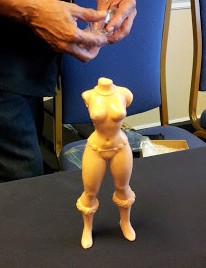


It’s possible that this version of Teela was the basis for Teela as she appeared in DC Comics’ 1982 story, To Tempt The Gods:
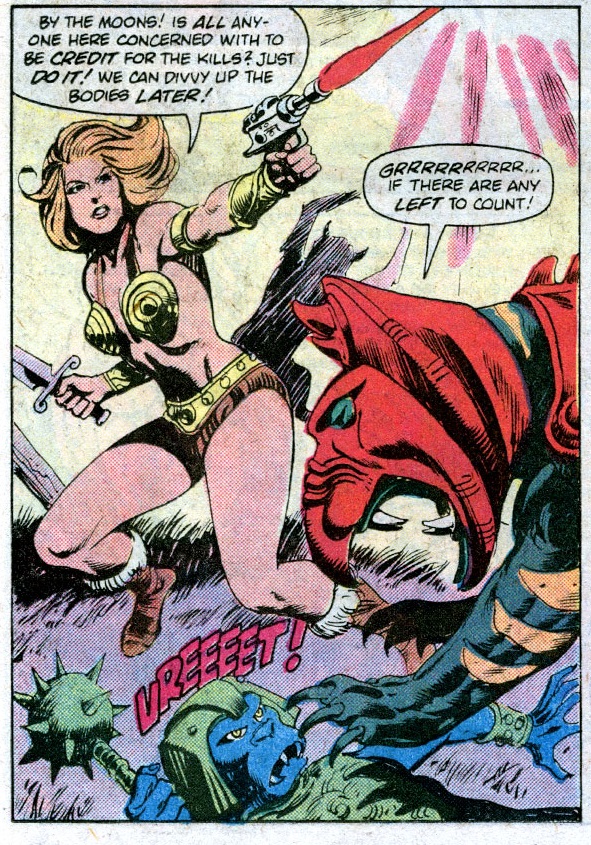
The cross sell art depicts Teela with reddish-brown boots and armor (these could appear more red or more brown, depending on the printing) and Goddess’ snake staff in gold:

However, Mattel’s prototype for this version of Teela had a more vibrant color scheme. In the model below, Teela is carrying the gold spear and shield from the original concept Teela drawing. In marketing materials she is depicted playing the same role that the Goddess/Sorceress did in the first mini comic.


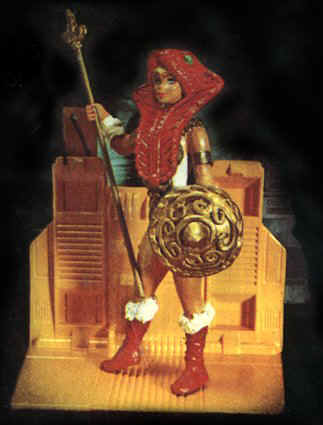
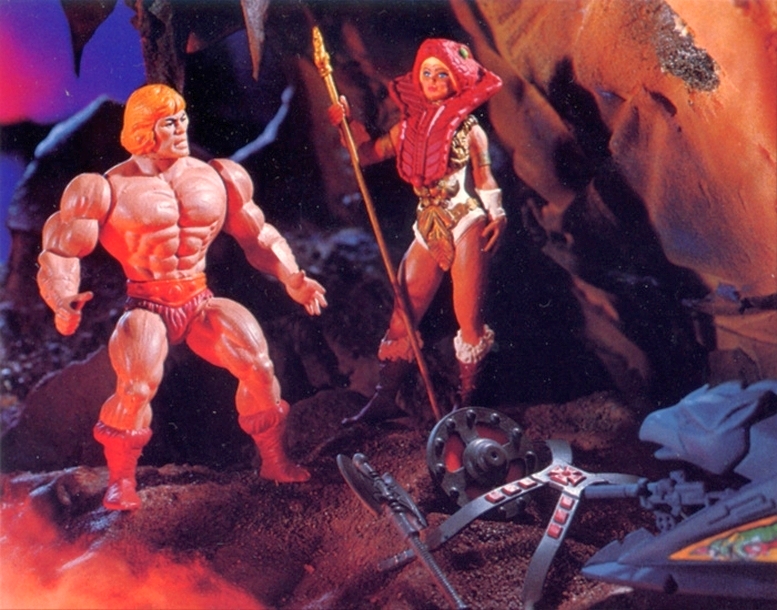
Another view of the prototype from the 1982 Mattel dealer catalog:
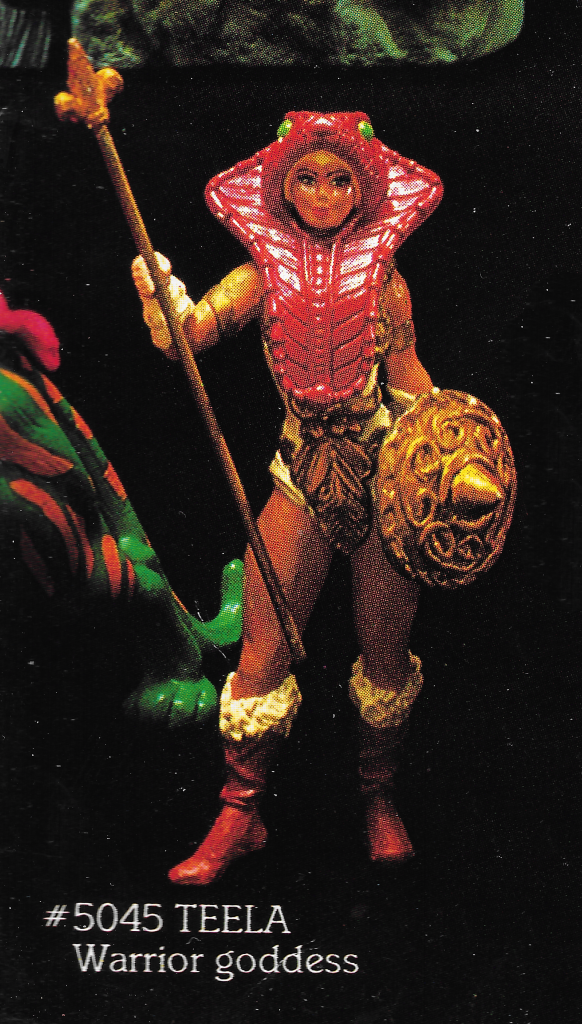
At some point along the way, it was decided Teela would come with the snake staff rather than the spear, and it along with the shield would be colored the same red as her armor. This third iteration prototype gives her Barbie-like leg articulation. She also retains the white tops to her boots and the green detail on her snake armor. The shield looks rougher than the final version.


I believe the image below is the same prototype as the above, only without the snake armor. Frustratingly, it’s very low resolution and hard to make out the details:

Update: there was also an auction many years back for a wax casting prototype Teela, which has the same articulation as the previous prototypes. However this ones seems to have some differences in the design of the boots and tunic. Unfortunately the image doesn’t show a lot of detail. Many thanks to Fabio Leone for sharing this image!
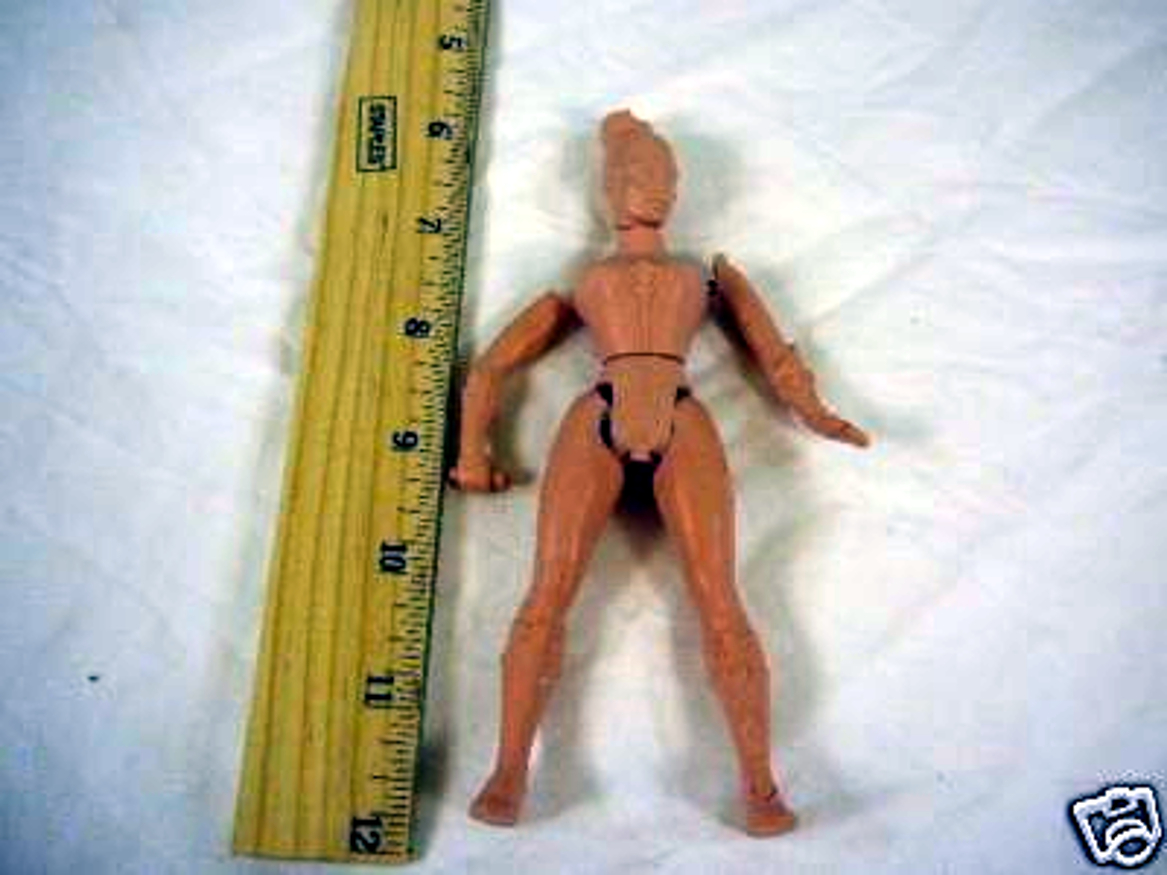
Several test runs were done of Teela’s head, one with her hair in a bun (chosen for the final toy), and one with long, flowing hair:
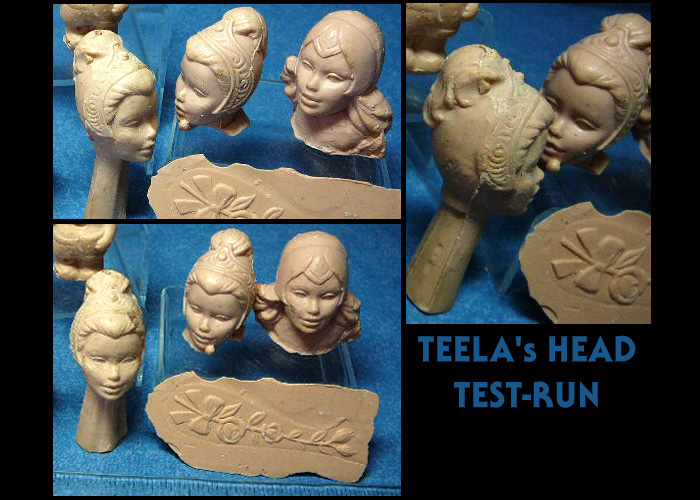
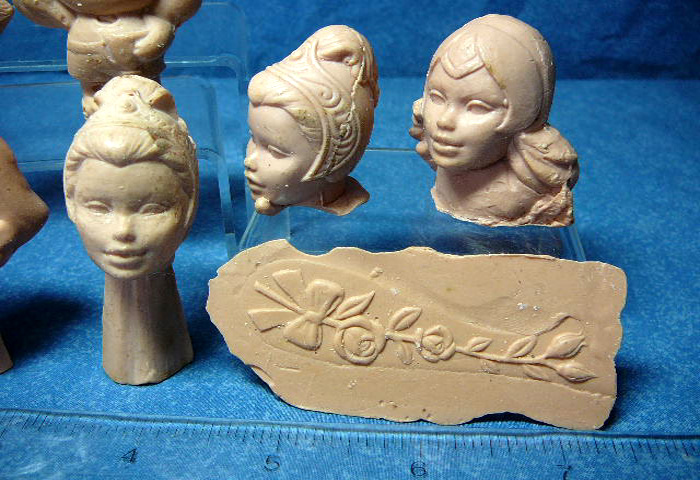
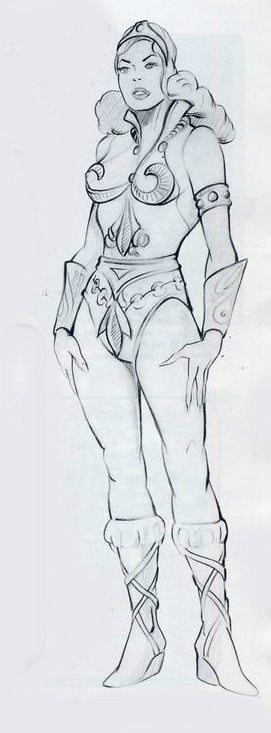
Yet another variation appears in the 1982 JCPenny Christmas Catalog (below). Here again Teela looks like the final toy, except the tops of her boots and her forearm bracers are painted white. She apparently does not have the green snake eyes.
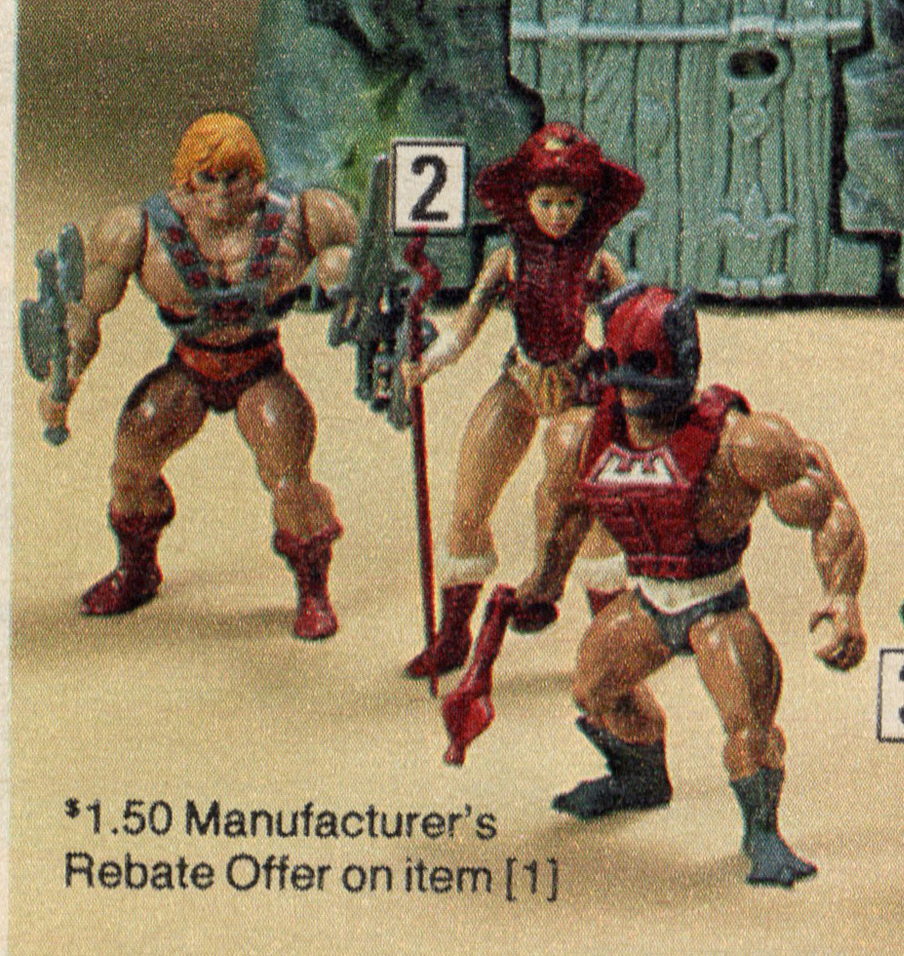
In the 1983 Mattel Dealer Catalog, Teela appears in her final form, except she retains the green eyes on her snake headdress. This detail appears in earlier prototypes as well. I’m unaware of any production models with this detail, but this does look like a factory example rather than one painted by hand. Perhaps this is like the Battle Cat with the striped tail – an early test model that never went into full production.
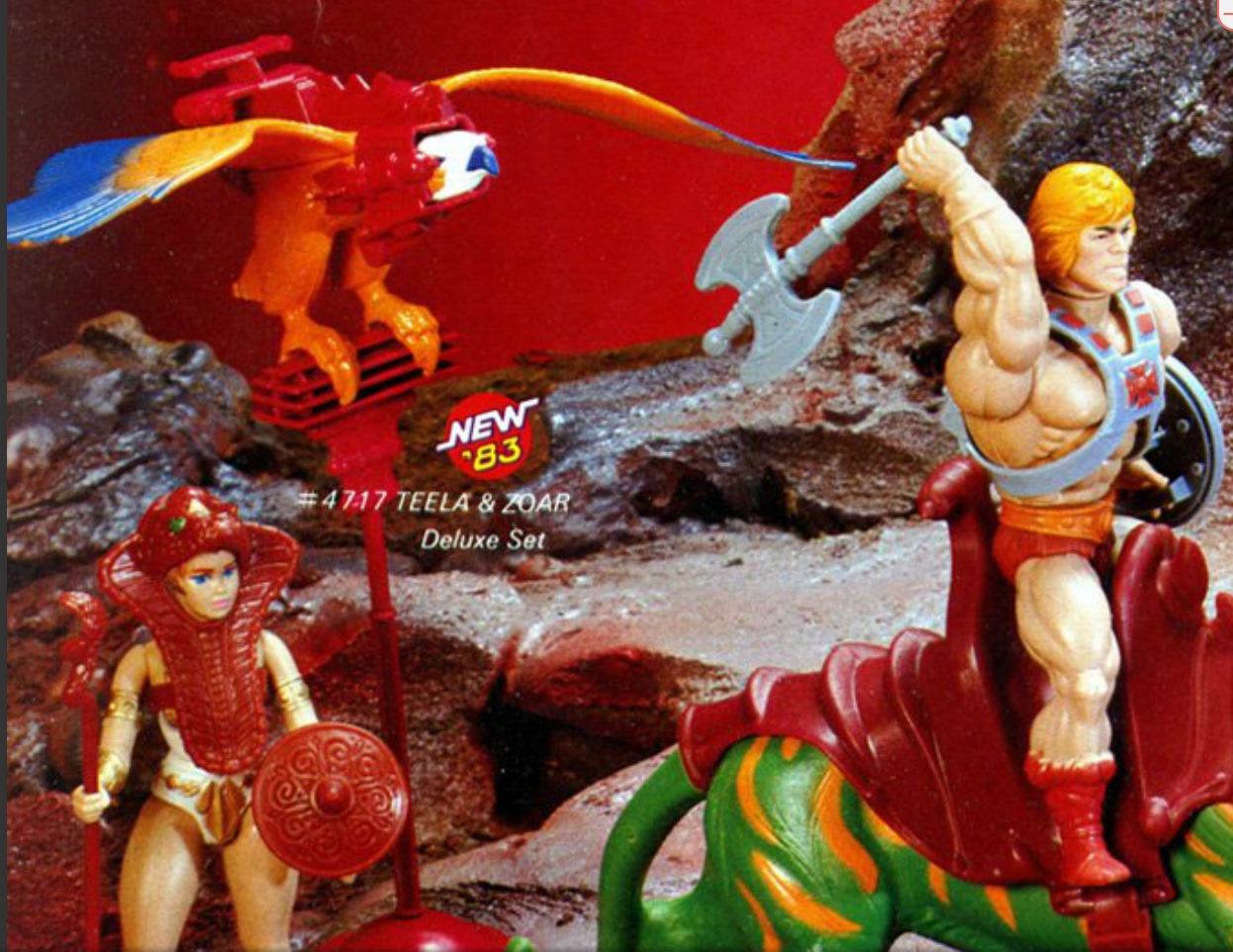
Update: collector John Oswald has acquired one of these factory sample Teela figures with the green snake eyes. He was kind enough to share these photos of her, as well as additional photos from the 1983 Mattel catalog showing this particular variant:

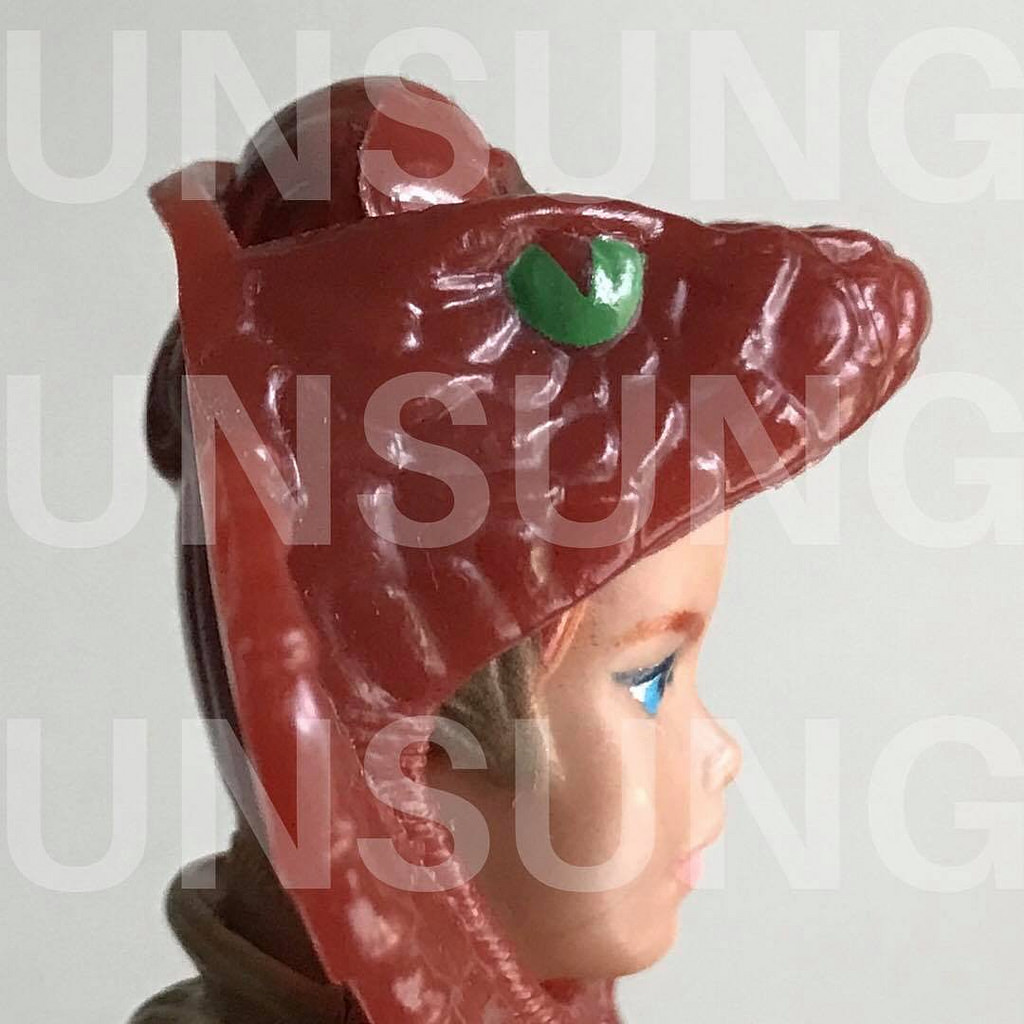
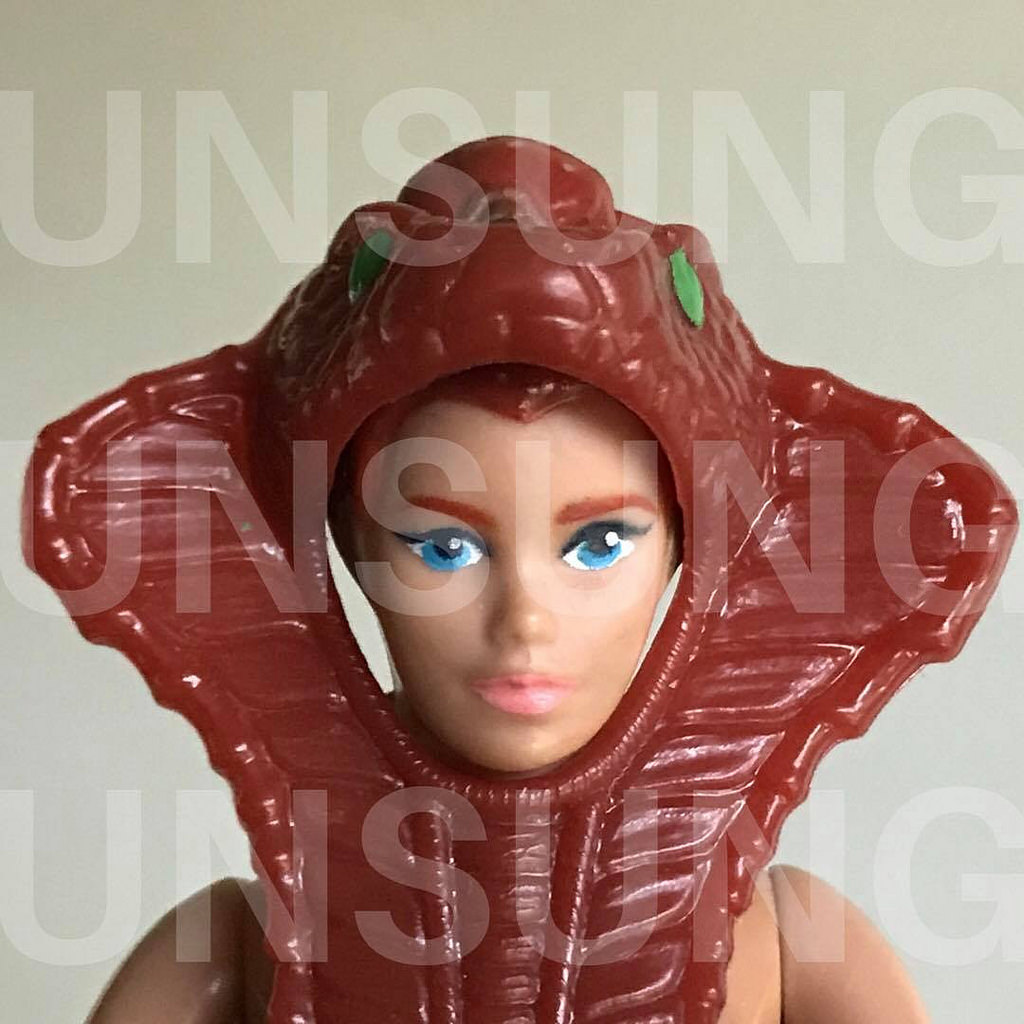

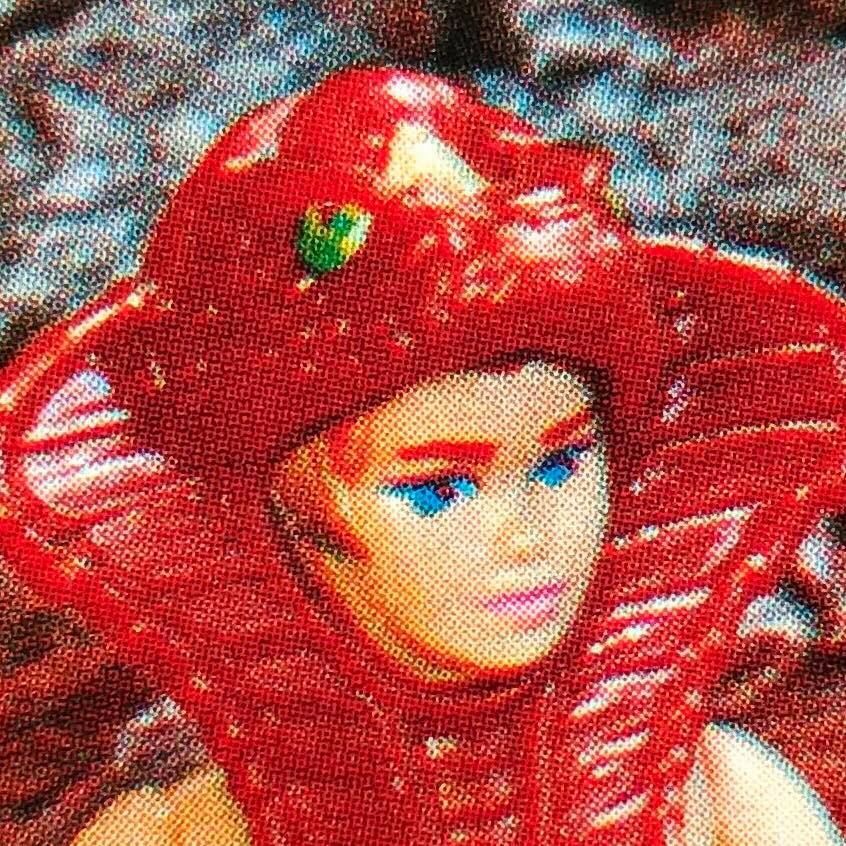
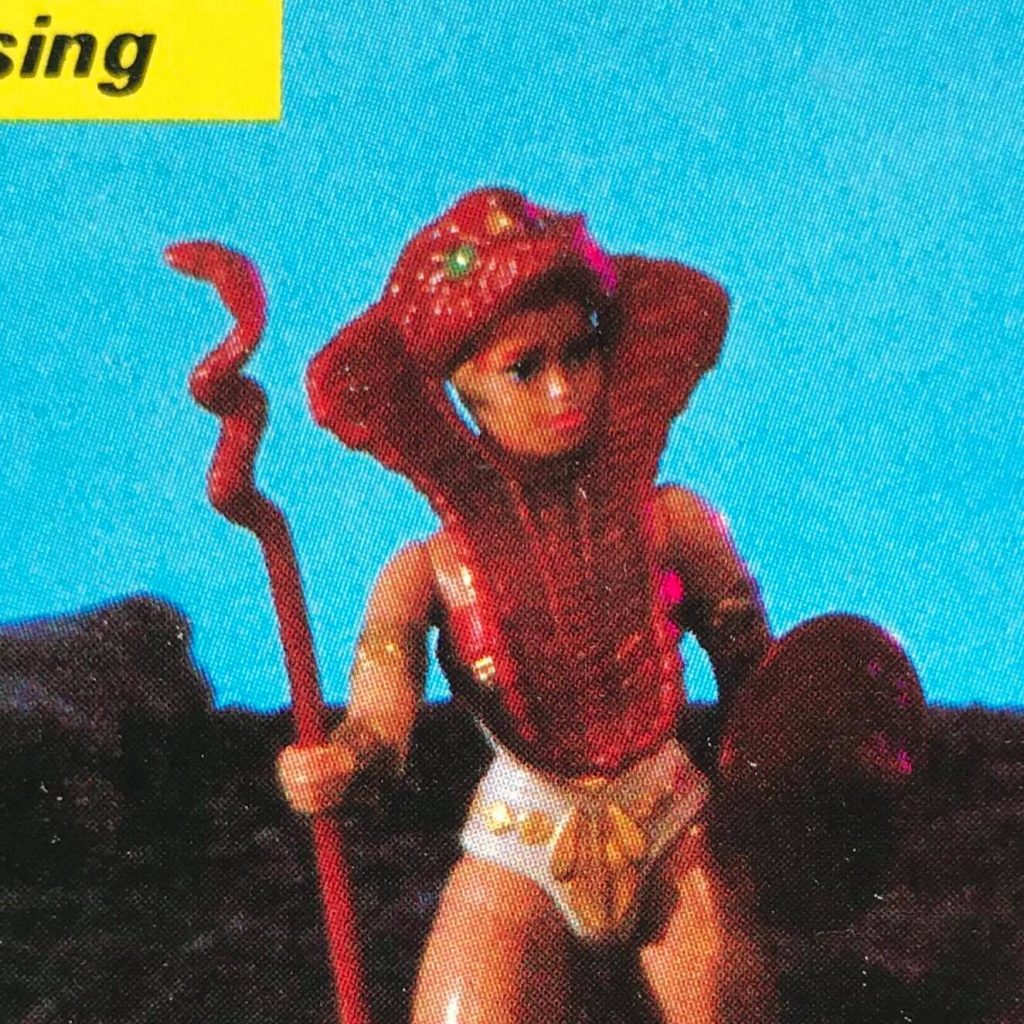
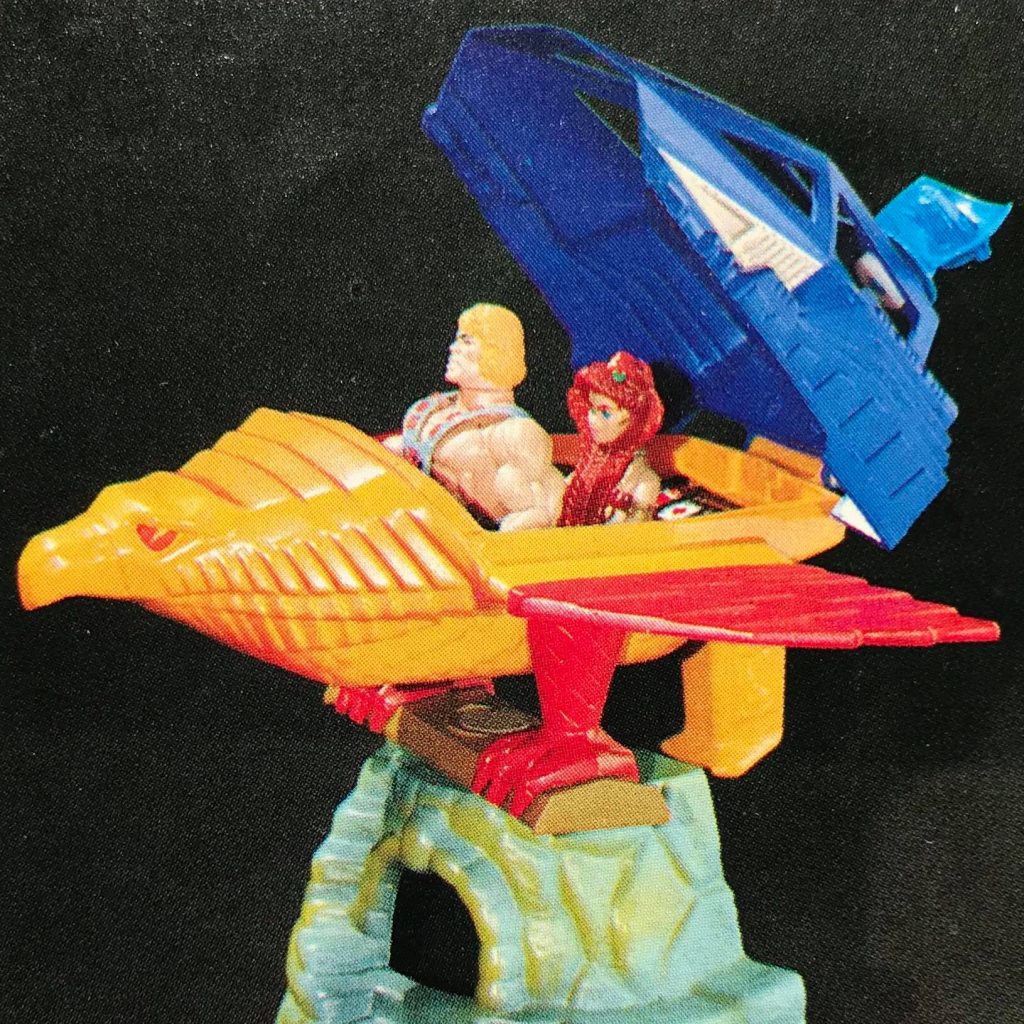
Production Toy
The final toy (initially produced in Taiwan) features the ball-in-socket leg articulation used in the male figures. She loses the white detail on her boots and the green detail on her snake armor. The sculpt is noticeably softer than the earliest prototypes.

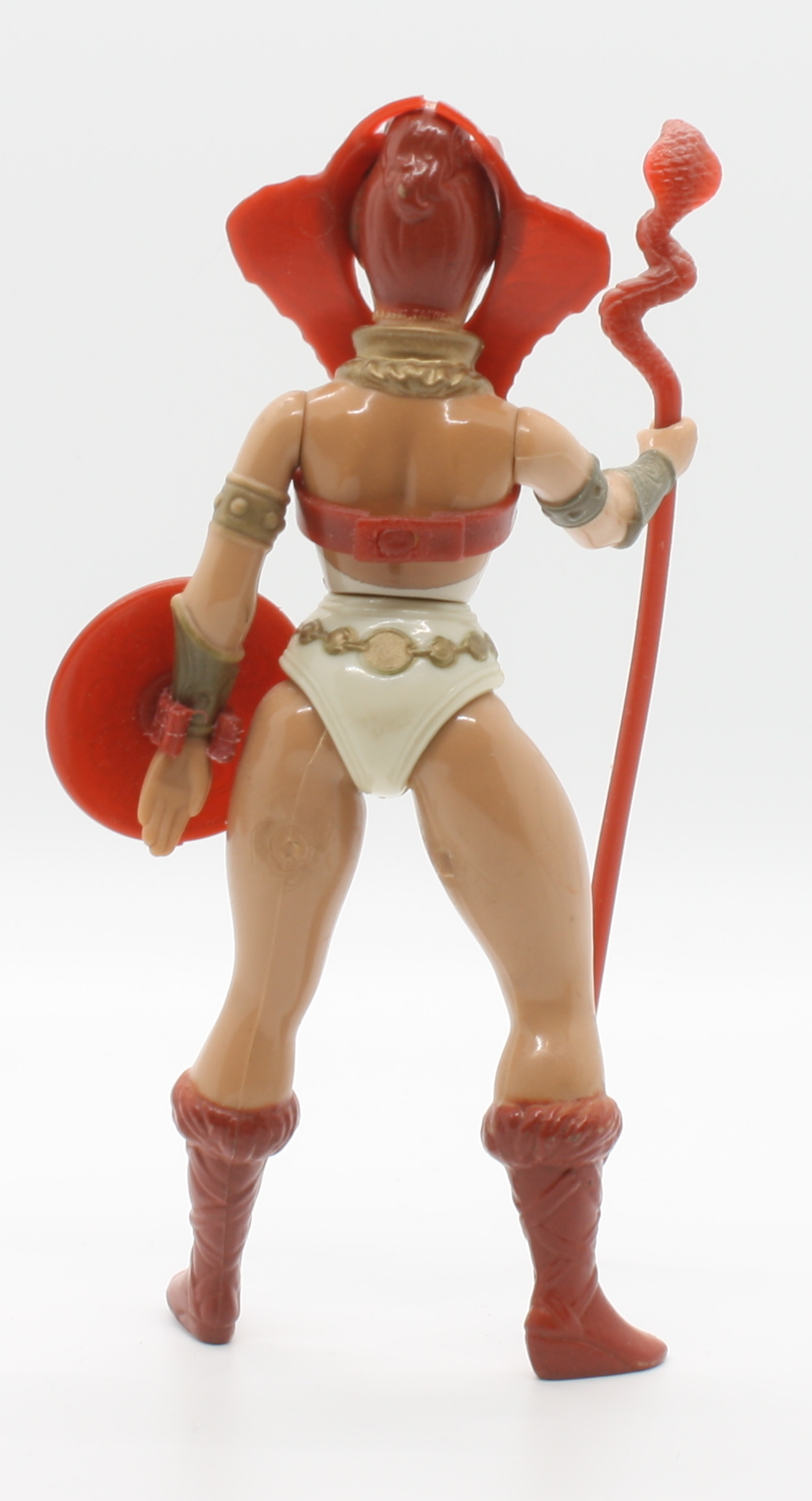
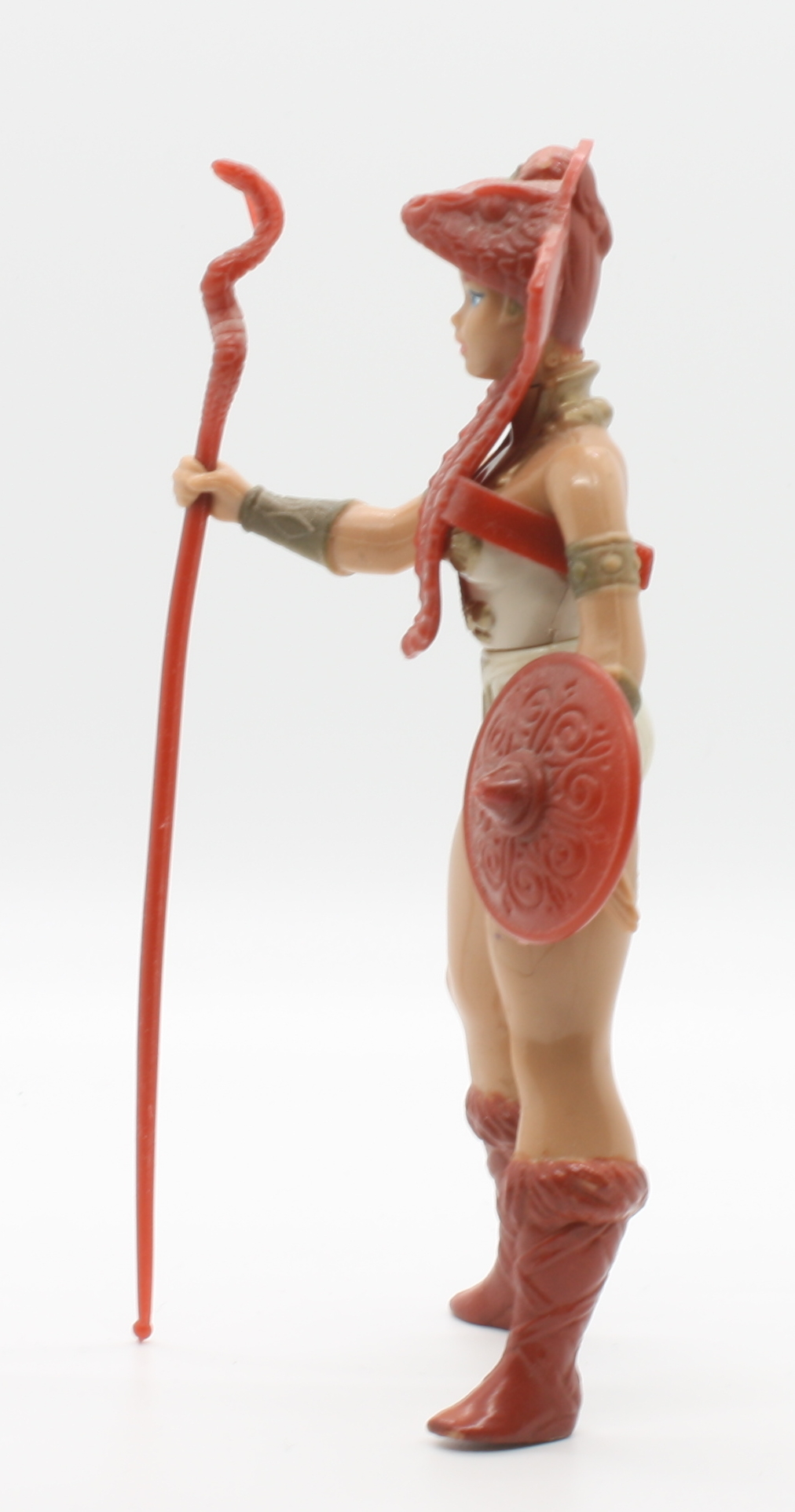
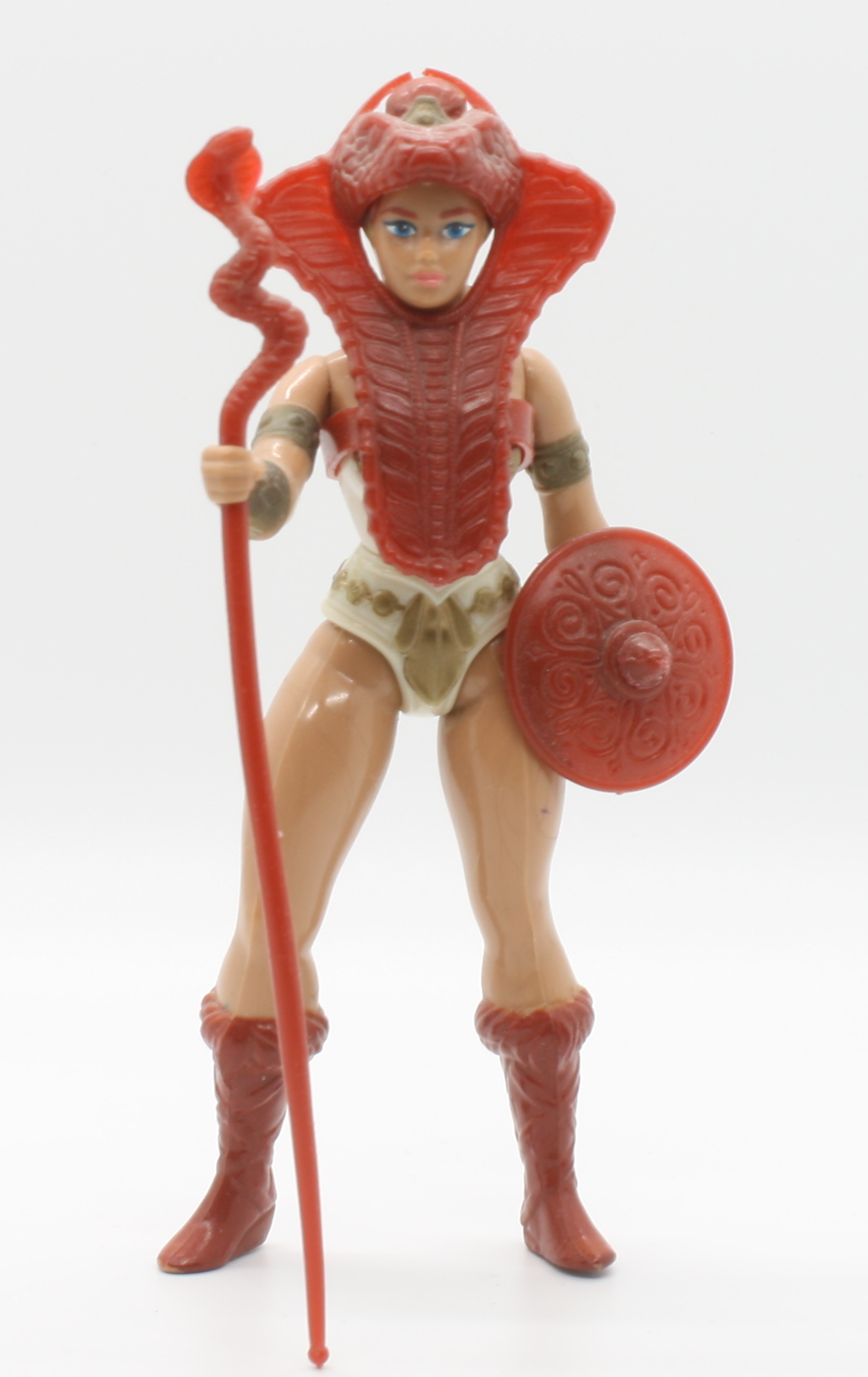
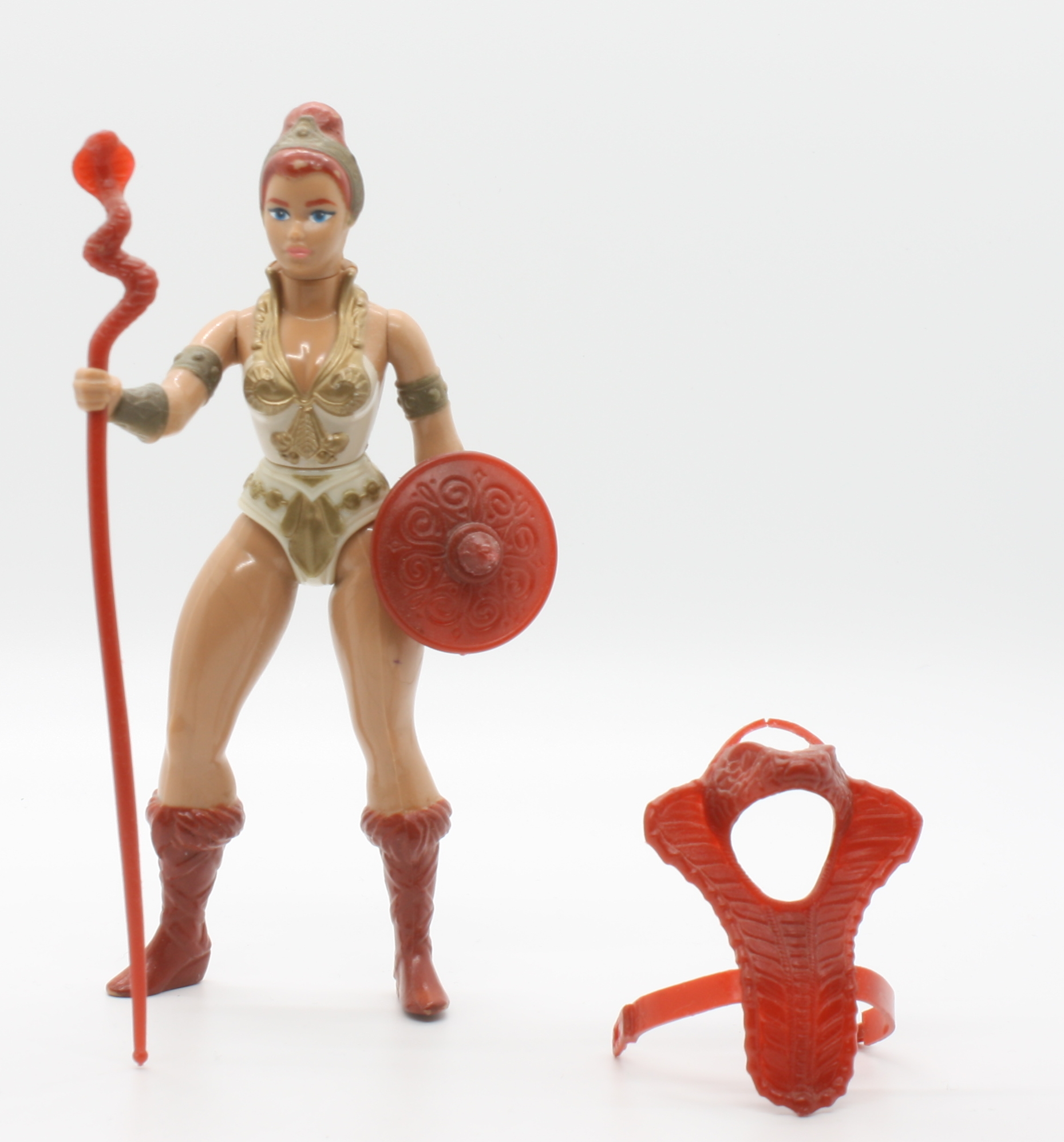
Notice that the right boot has a larger heel than the left boot. This allows her to stand on the ball of her right foot (as the first prototype depicts) with some measure of stability.
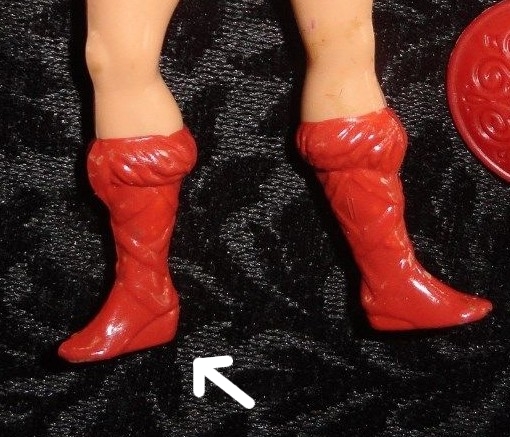
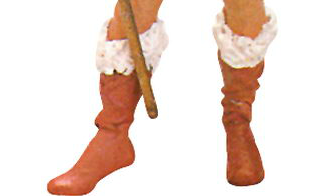
There was a lot of inconsistency in the application of paint on the figure’s face. The look could vary wildly depending on the country of manufacture:

In 1984, some Hong Kong reissues were released with brownish boots and hair, and brighter red accessories (more on Hong Kong Teela variants here):

Packaging
Teela was sold in a number of configurations. She was available as a single carded figure, on “8 back” and reissue cards:


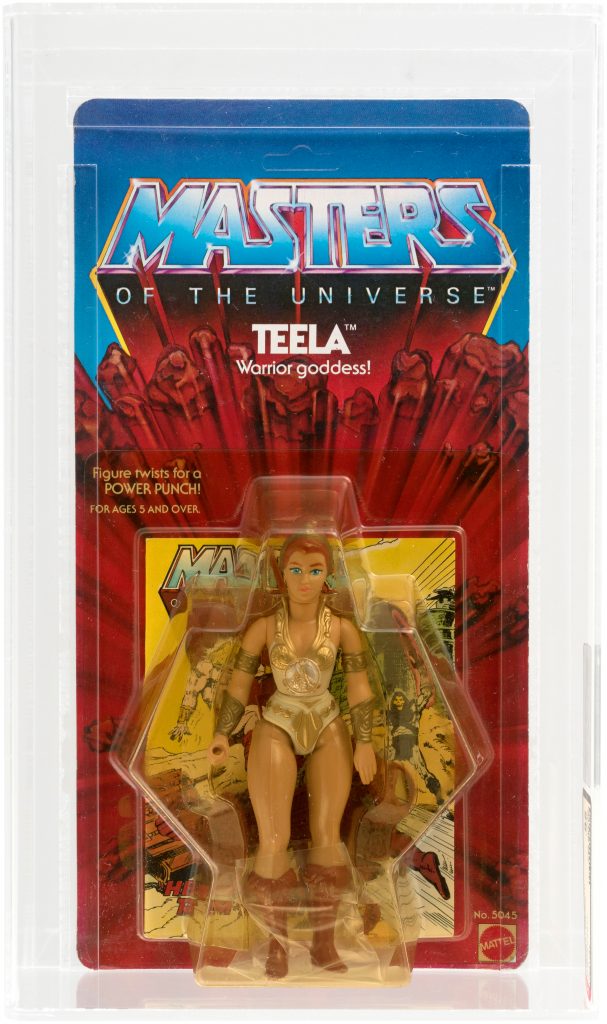
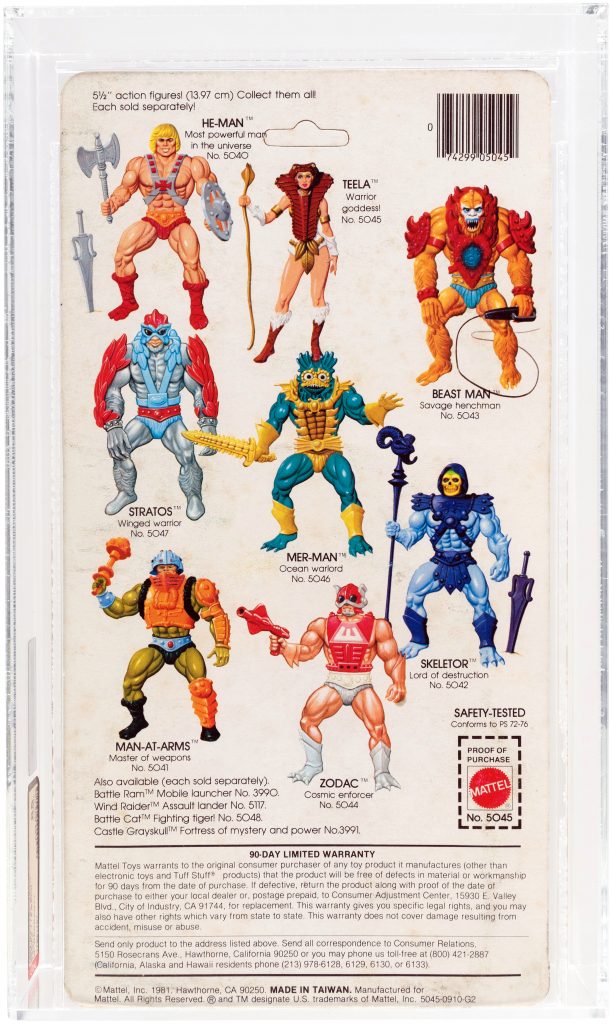
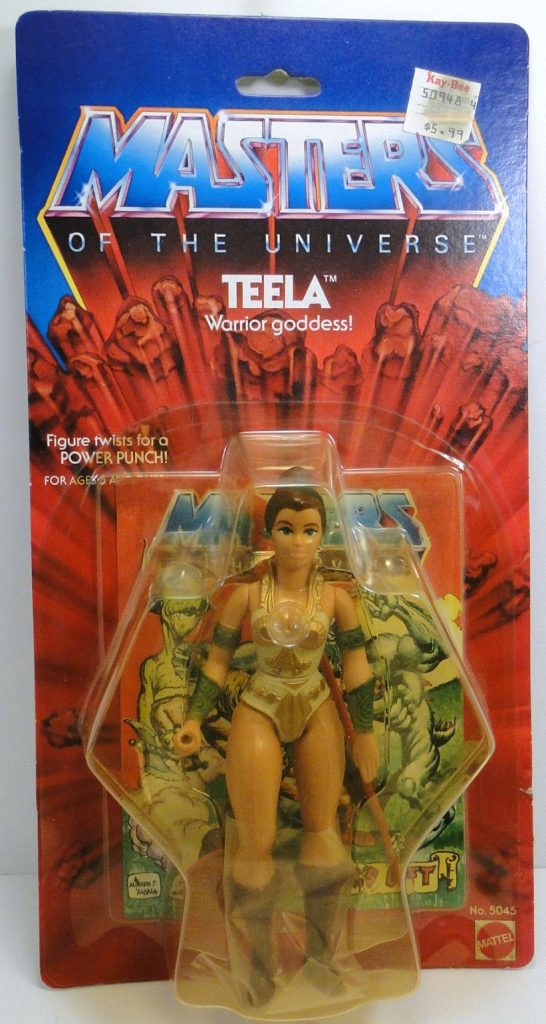

The tag line on Teela’s cardback art seems to present her as a kind of sorceress, which is indicative of her roots in the Goddess/Sorceress character:

She was also sold in a gift set package with Zoar. This one is rare and hard to find now:
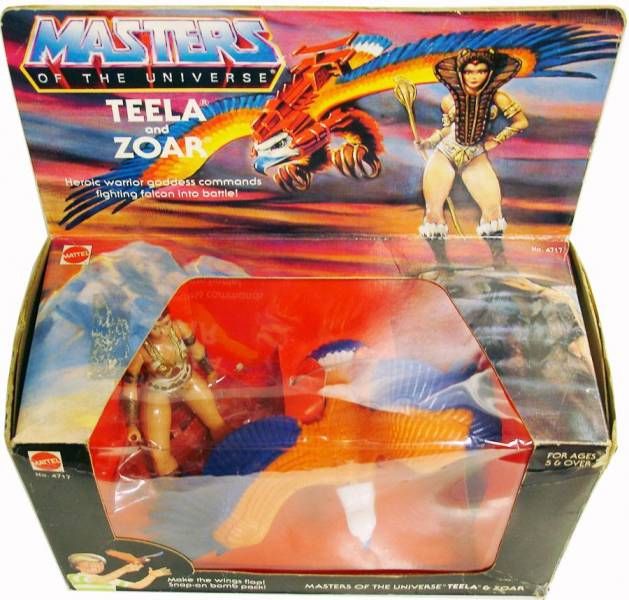
Another rare item is the Heroric Warriors gift set, featuring He-Man, Teela, and Ram Man:
Teela was also sold in a JC Penny gift set, with minimal cross sell line art on a brown box:
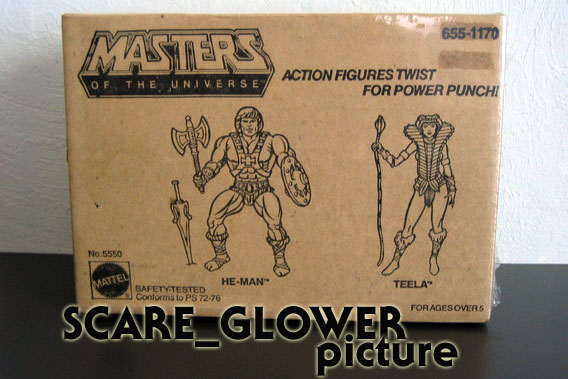
Appearances in Artwork
Artistic depictions of Teela in card art, box art and other media were all over the map, taking cues from the vintage toy, prototypes, and other sources.
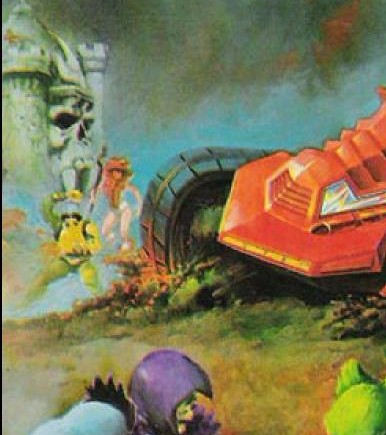
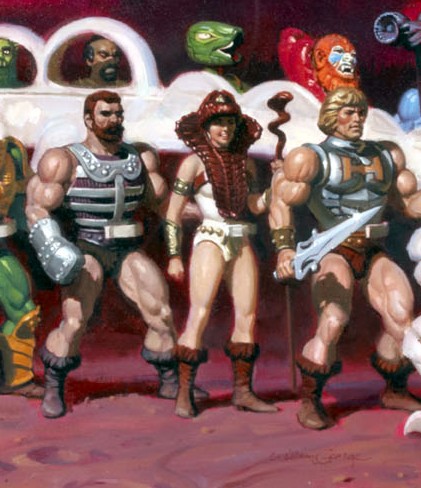
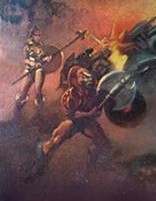
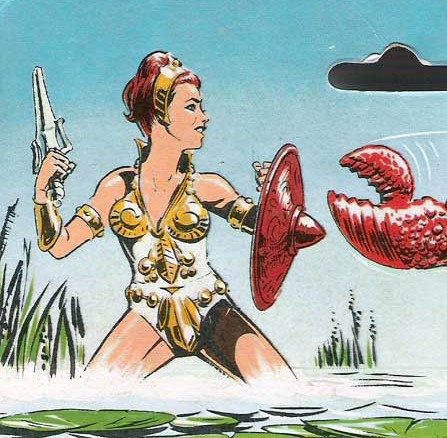



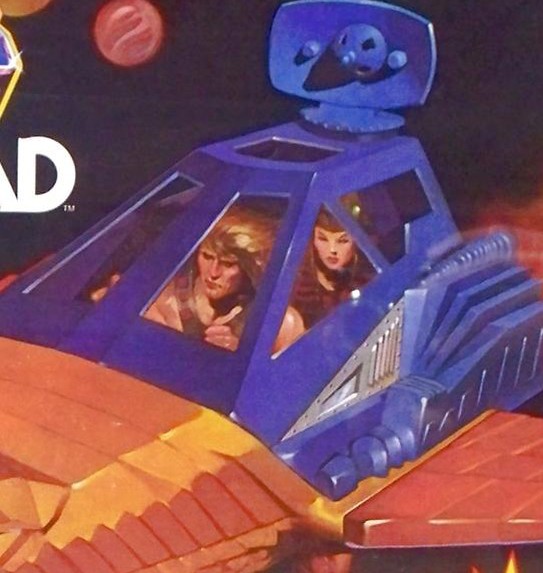
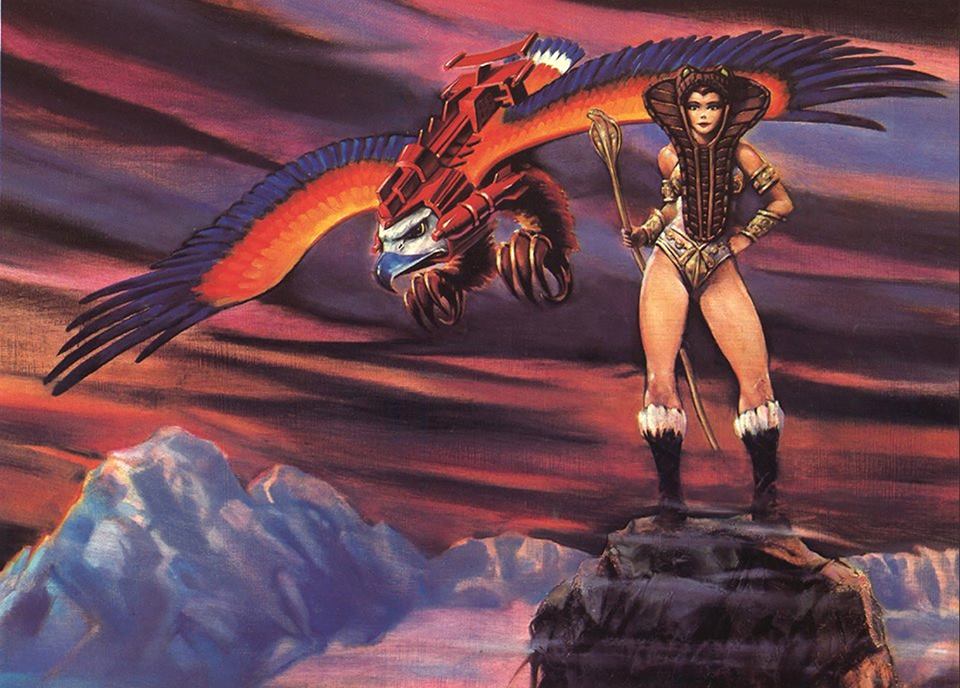


Minicomics
Teela’s first appears as a warrior woman with no real back story in the Alcala mini comics. The first attempt at giving her a backstory occurred in Mark Texeira’s Tale of Teela mini comic, where Skeletor makes a clone of the Goddess (here depicted with without the green skin) in order to take her as his bride. By depicting Teela as a clone of the Goddess, the attempt seems to be to brand Teela as a kind of two-in-one toy. Take off the armor, and she’s Teela, fearsome warrior. Put it on and she can be Goddess, mystical guardian of Grayskull.
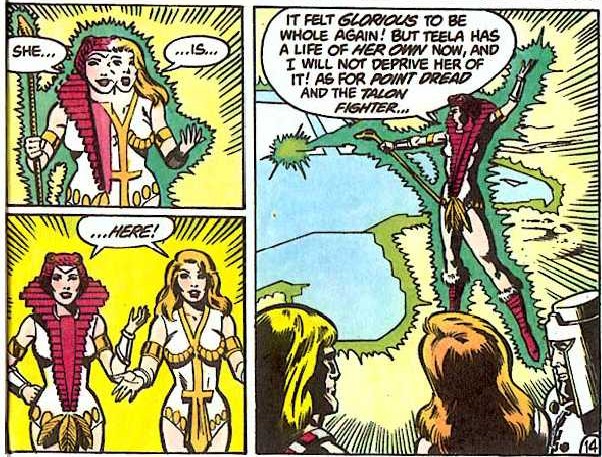
Animation
In Filmation, Teela is the natural daughter of the Sorceress. The identity of her mother has been hidden from her, but it is made clear in the series that Teela will someday replace her mother as the guardian of Grayskull.
Design-wise, Teela’s look is a bit different compared to the toy. She has a simplified costume with an enlarged collar. Most of the decorative details were removed from her costume for ease of animation, and her costume top was made entirely gold. She retains her white-topped boots that appeared in early concepts and prototypes:
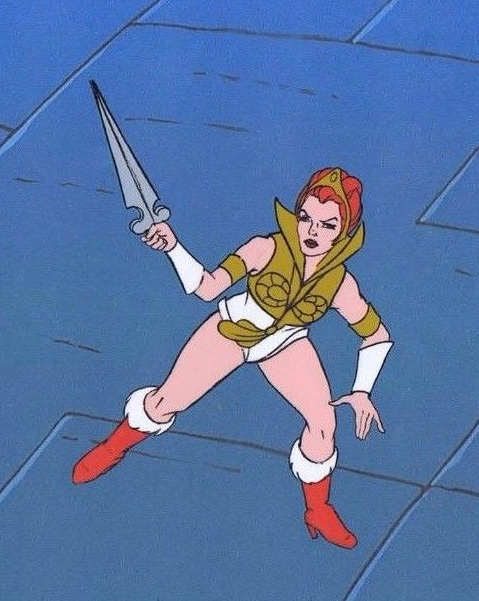





In Filmation’s animated toy commercial, produced in 1982 (shown at the beginning of this article), Teela’s design is closely modeled on Mark Taylor’s concept art:


Other Depictions
Some of my favorite depictions of Teela come from Errol McCarthy’s licensing kit and style guide artwork. I love how dynamic she is here:
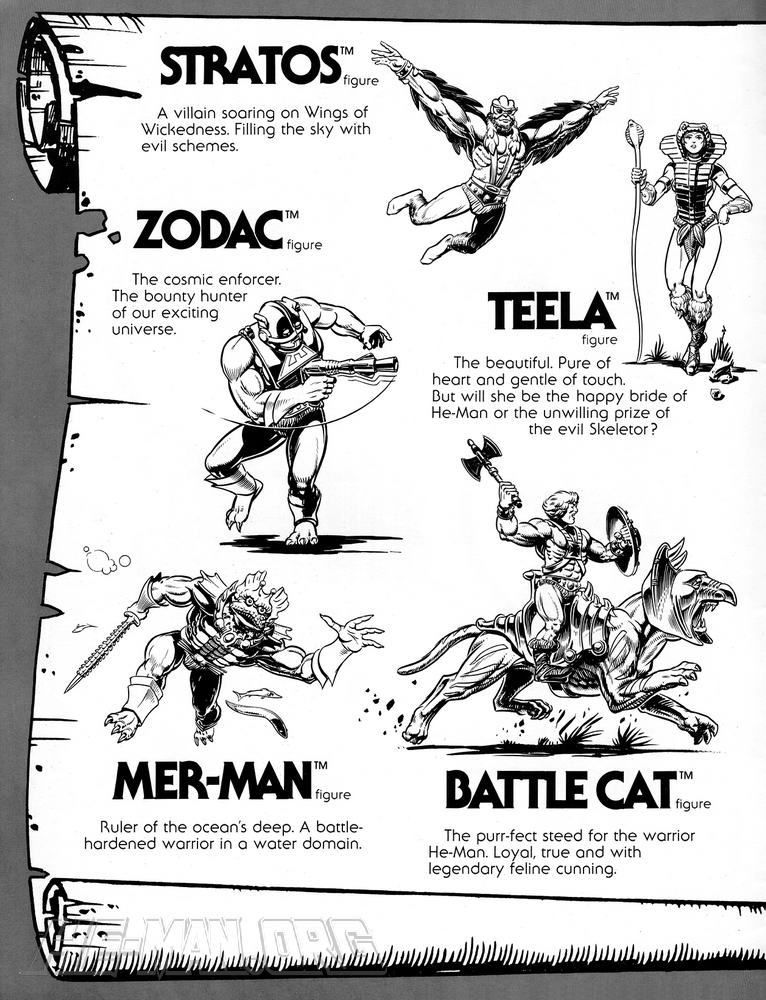
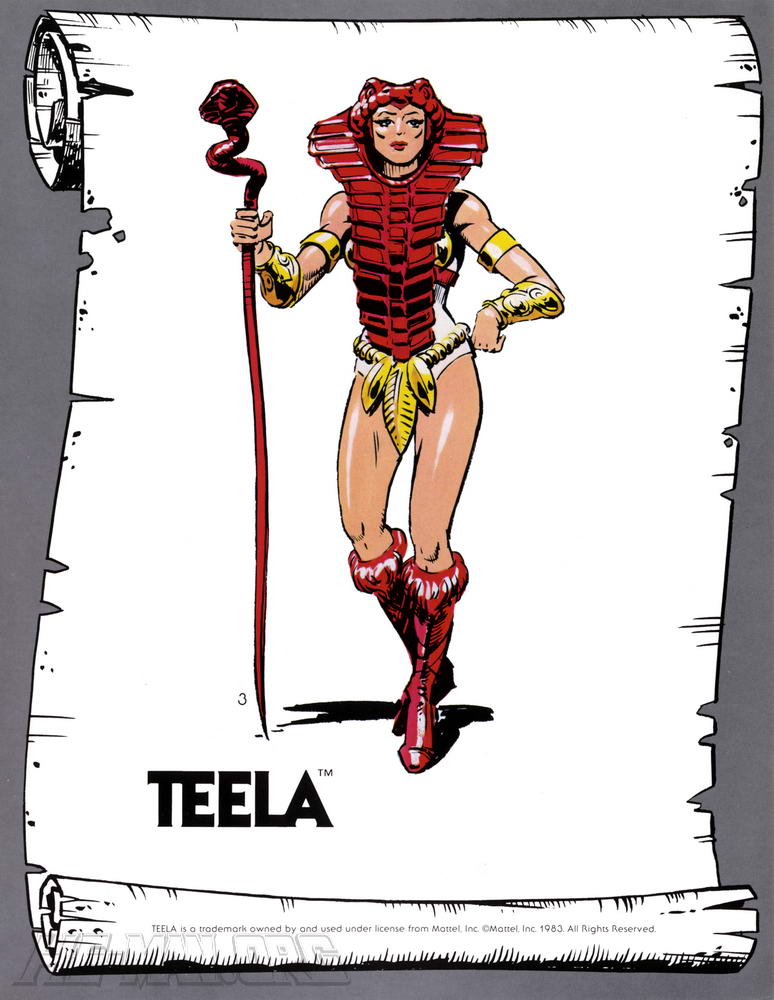

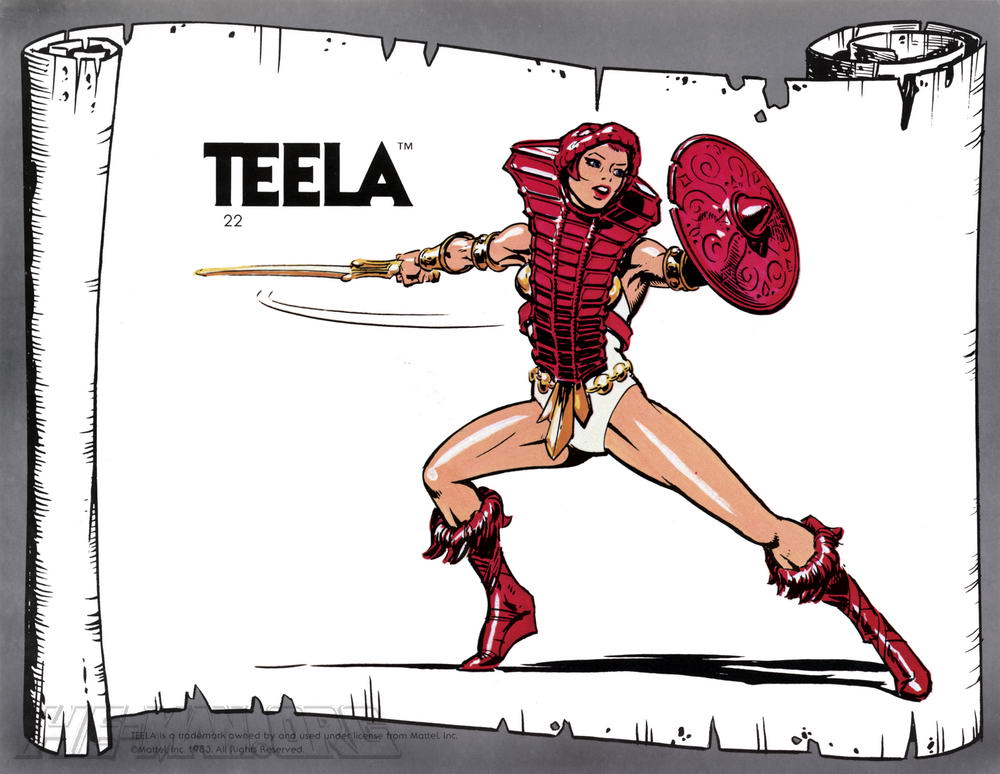
My all time favorite look for Teela comes from a puffy sticker that came with Kellogg’s cereal. I distinctly remember getting Teela and Battle Armor He-Man. The Teela sticker comes from the cross sell art, but gives the character red armor and boots instead of brown, and retains the gold staff. I don’t know why, but I’ve always thought it was the perfect look for her.
And of course there were many other depictions of the Warrior Goddess:
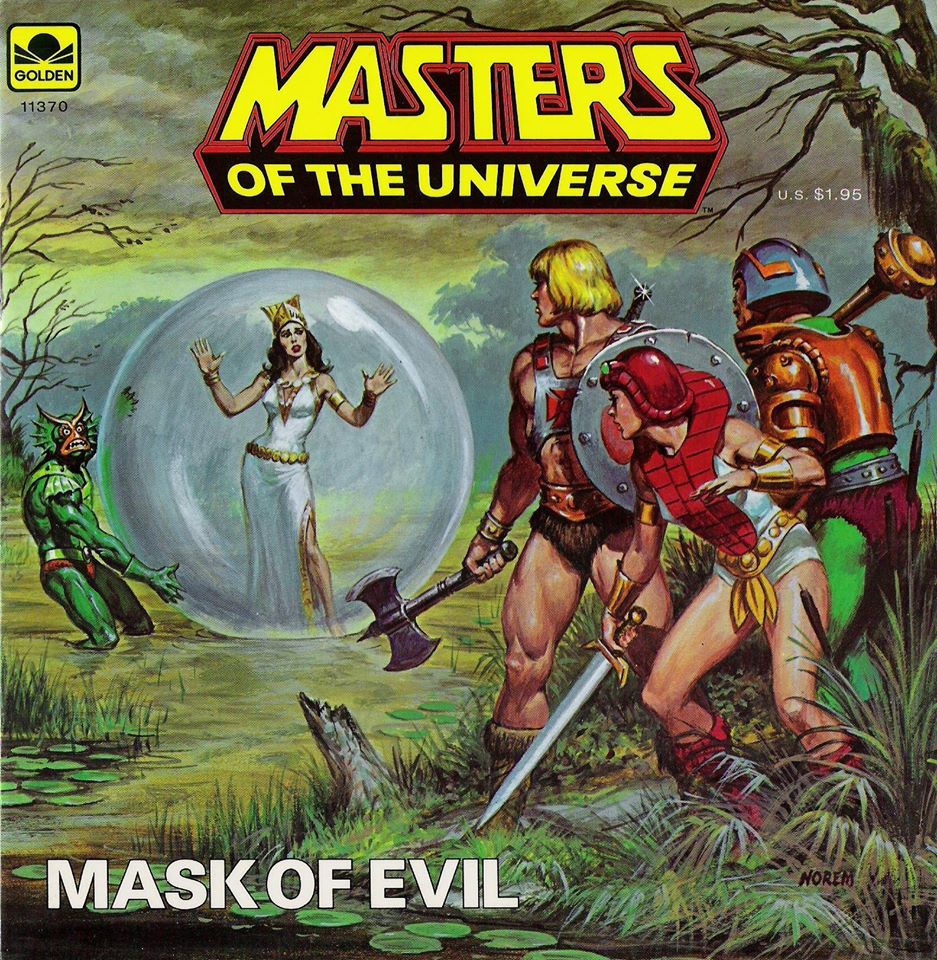
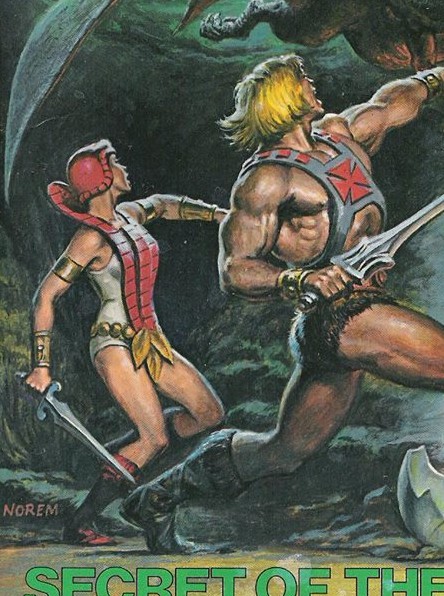
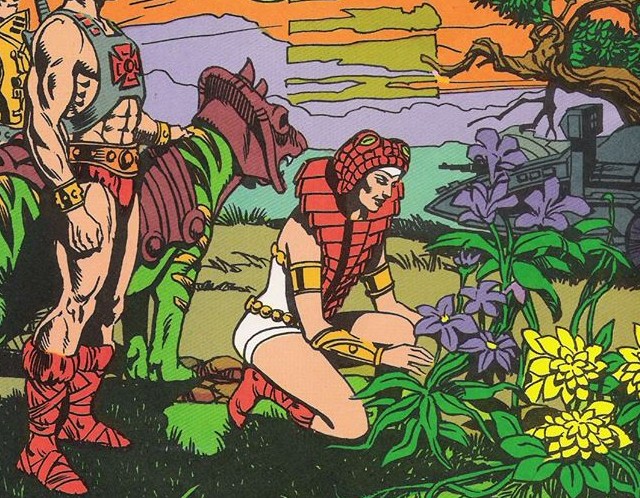
1987 Movie
Early concept art for the 1987 movie envisioned Teela in a two-piece bikini with her snake armor over top:

The costume actually used for the movie was a radical departure from any prior version of Teela, with only a few visual references to the original toy design.
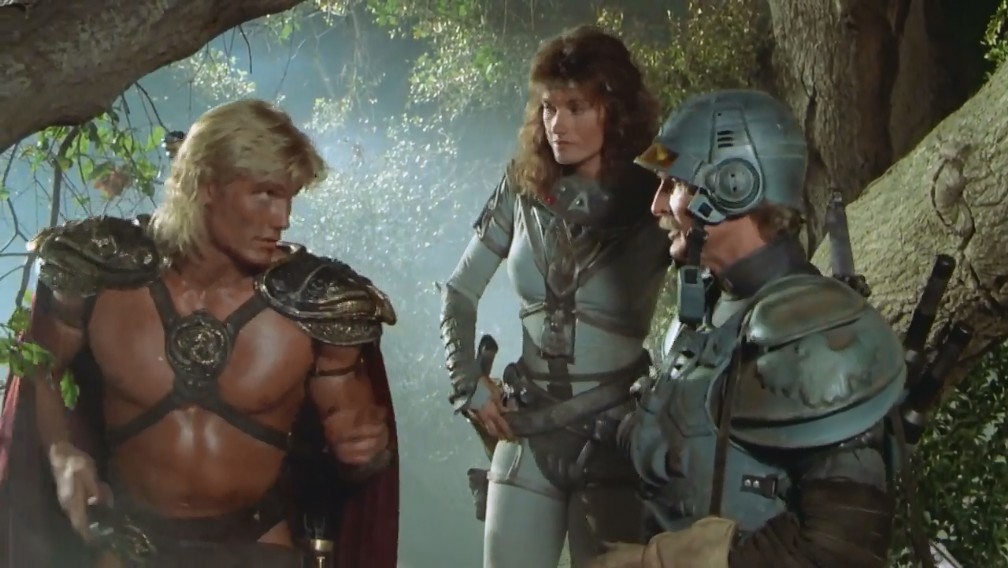
Want to support the blog? Consider becoming a Patreon supporter. You’ll also gain access to exclusive content and early access to posts on the blog. Alternatively, you can do your toy shopping through my Entertainment Earth affiliate link.


